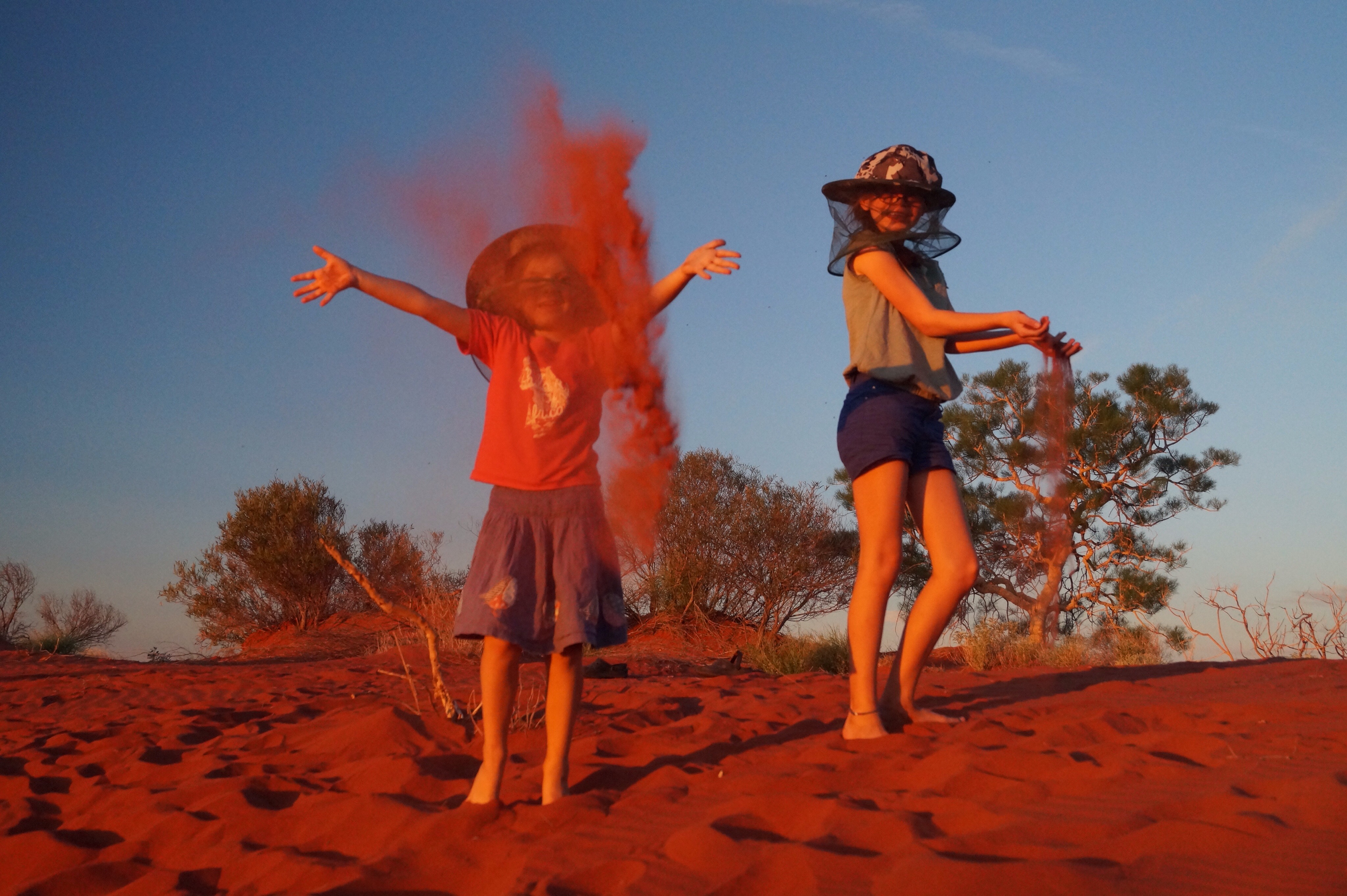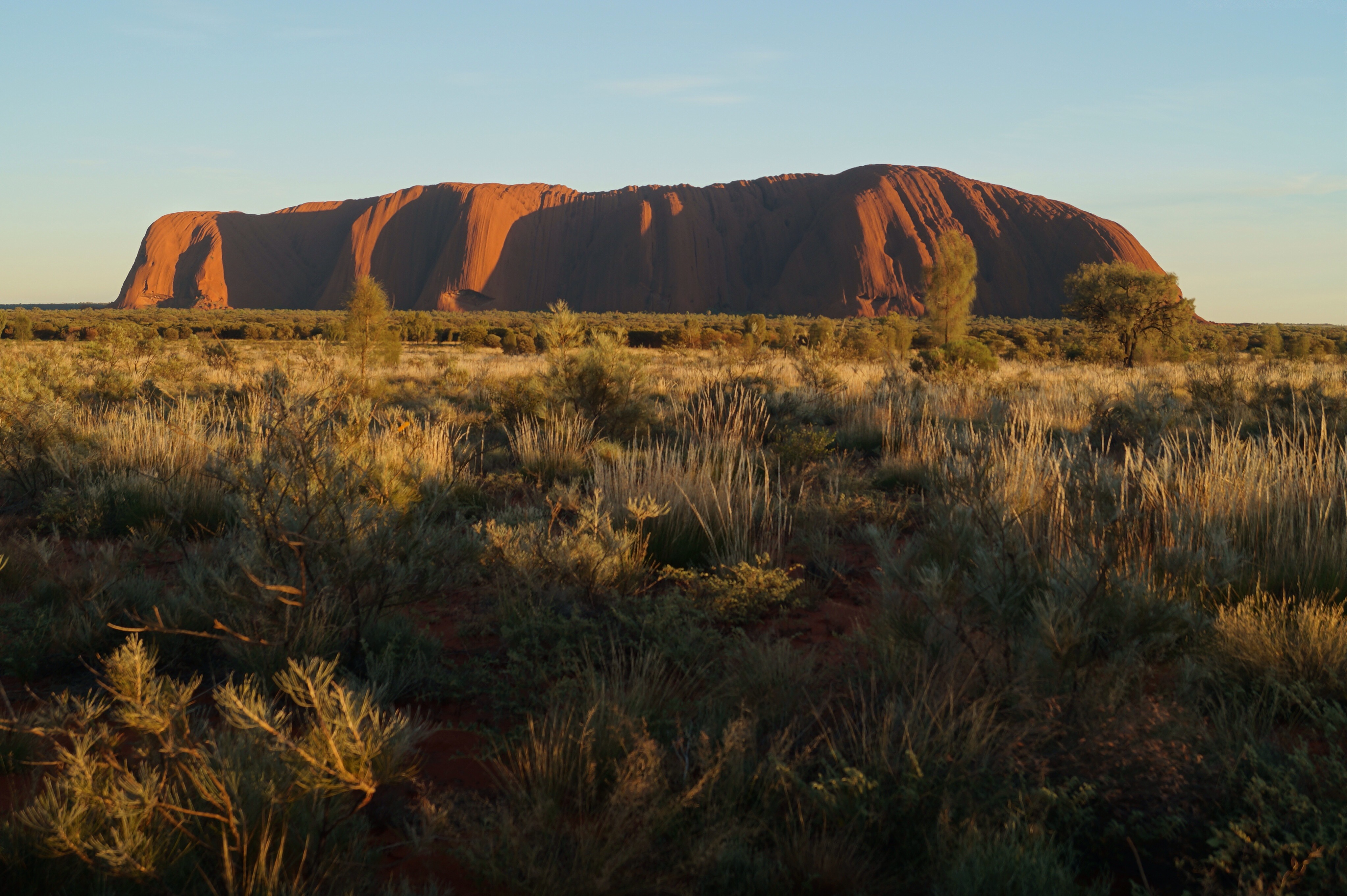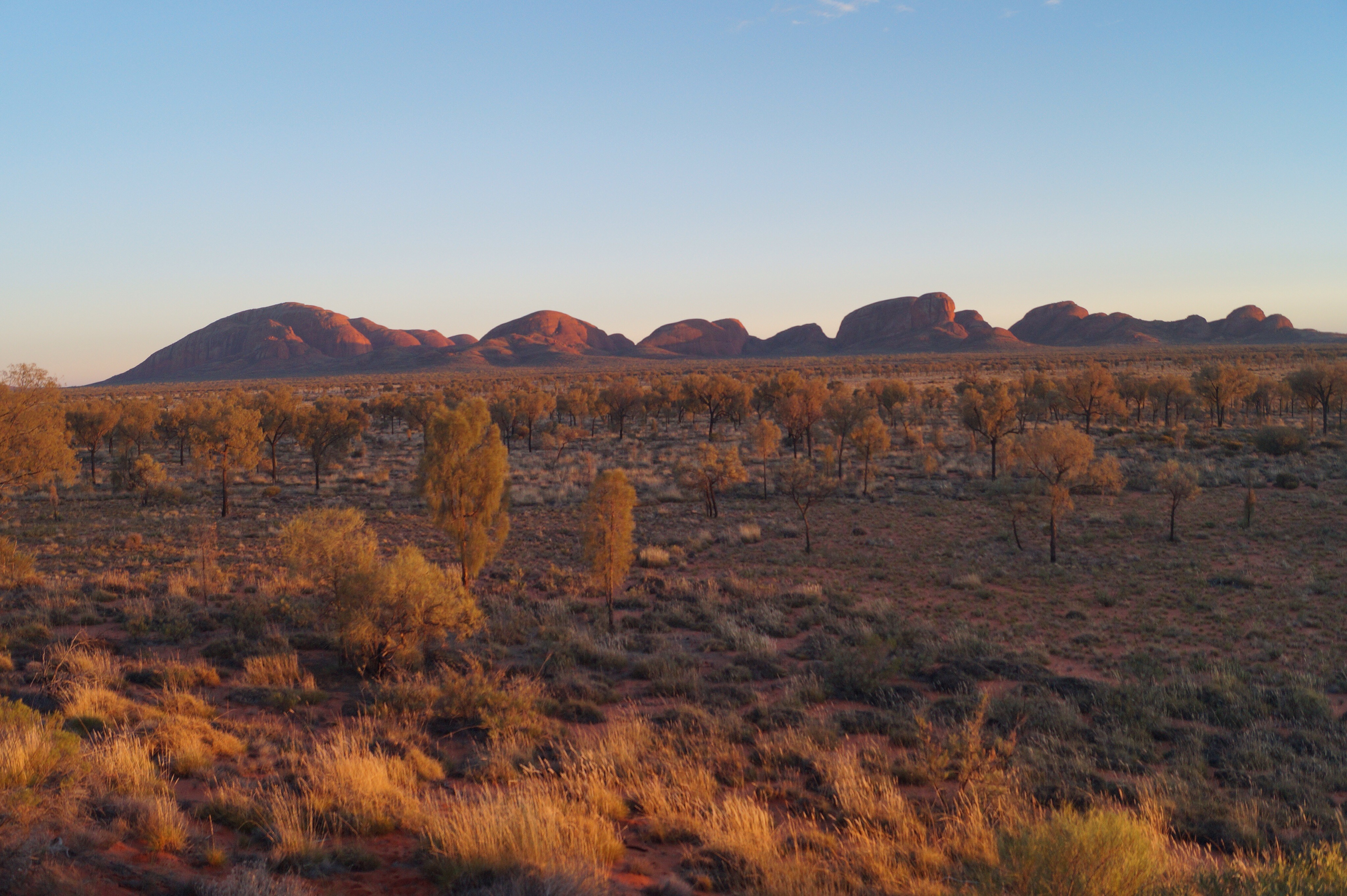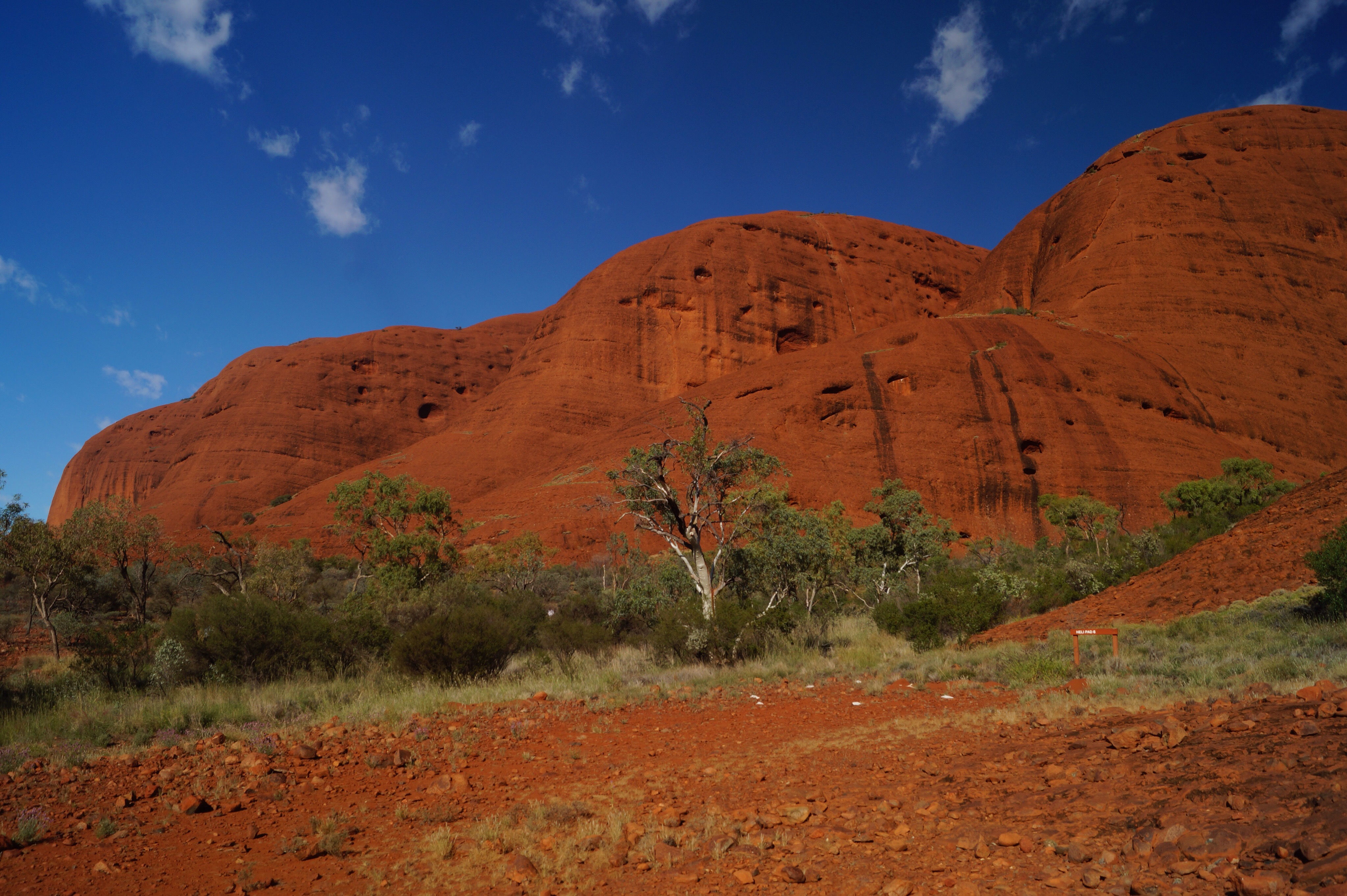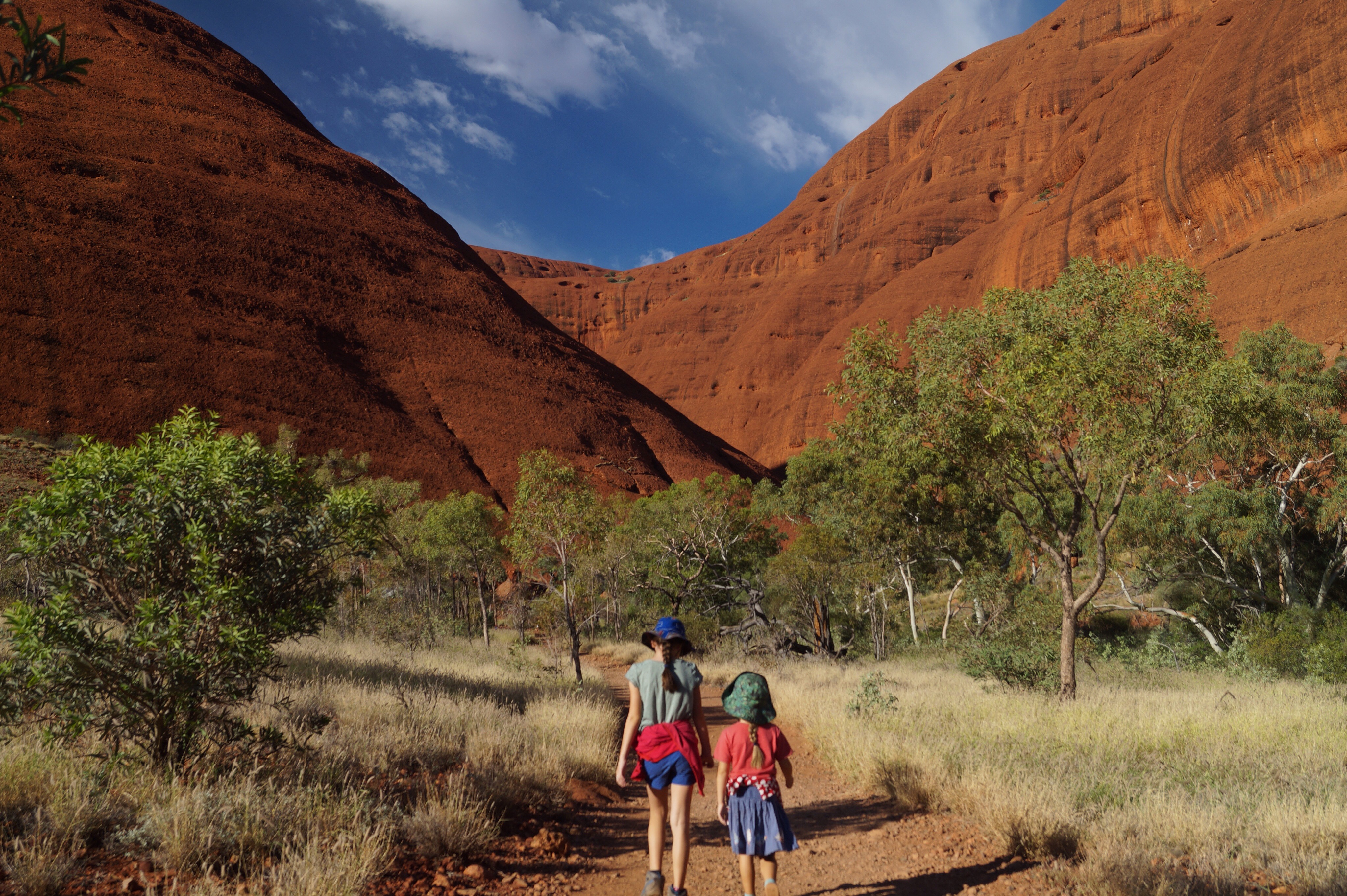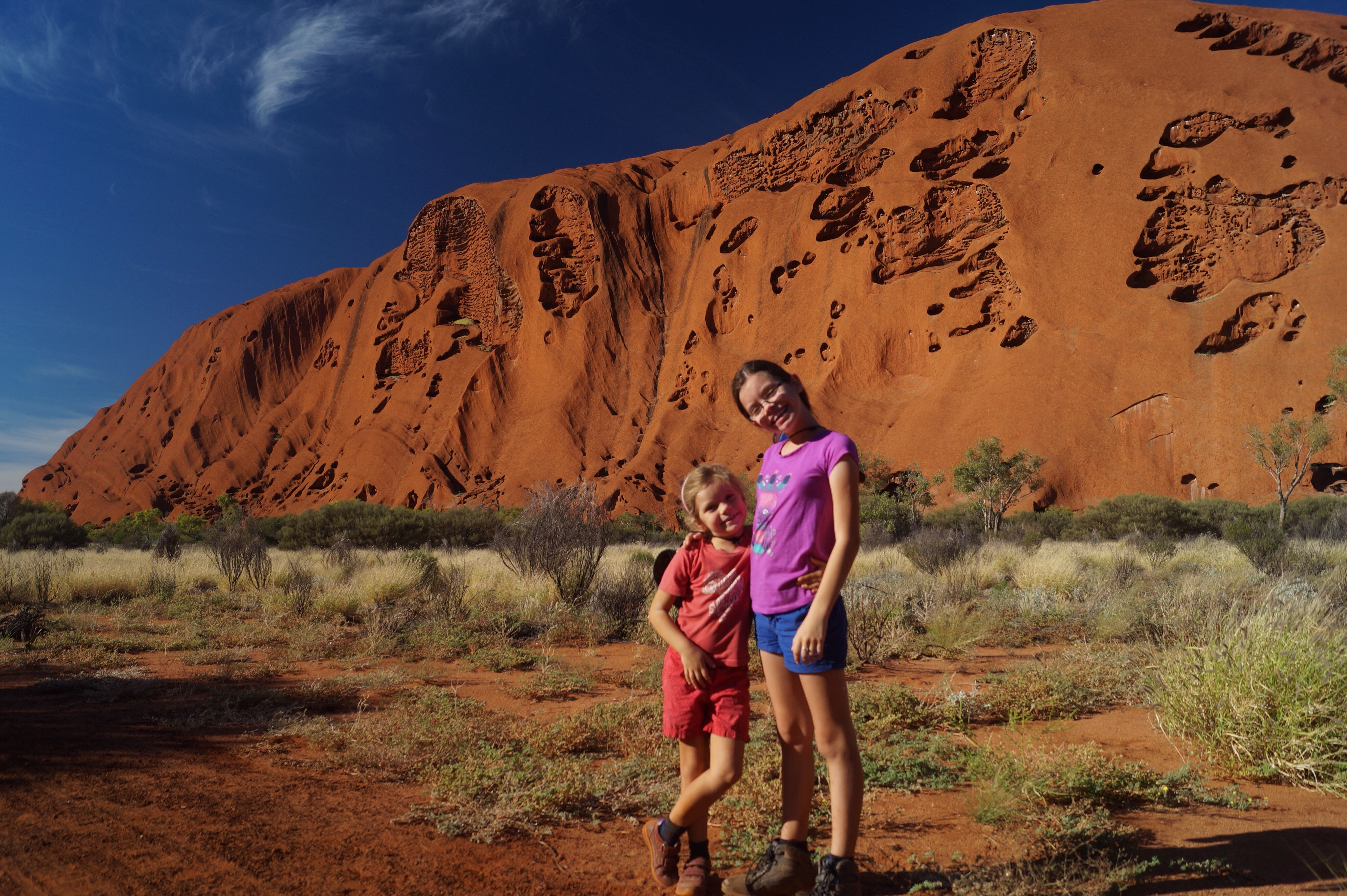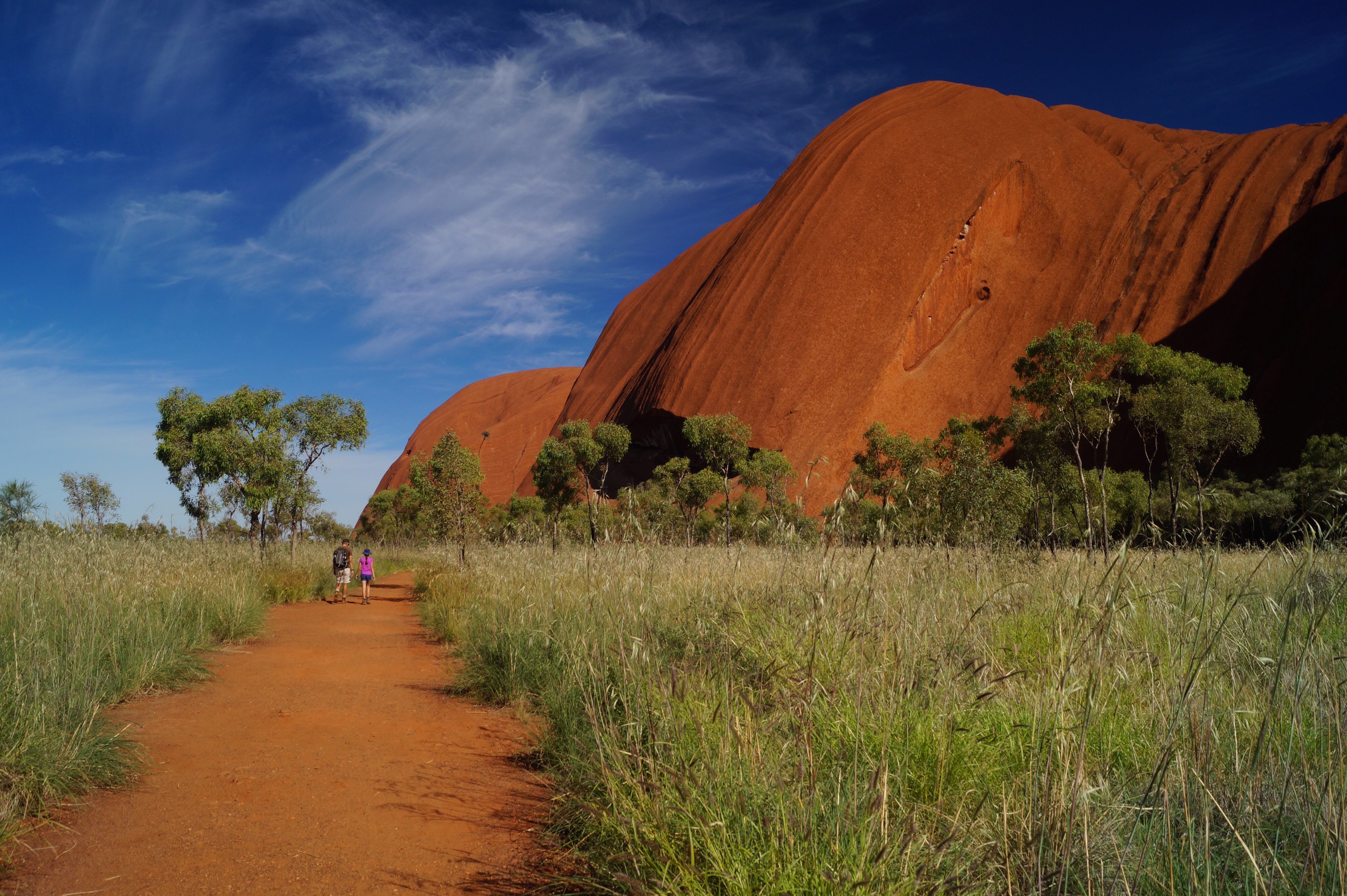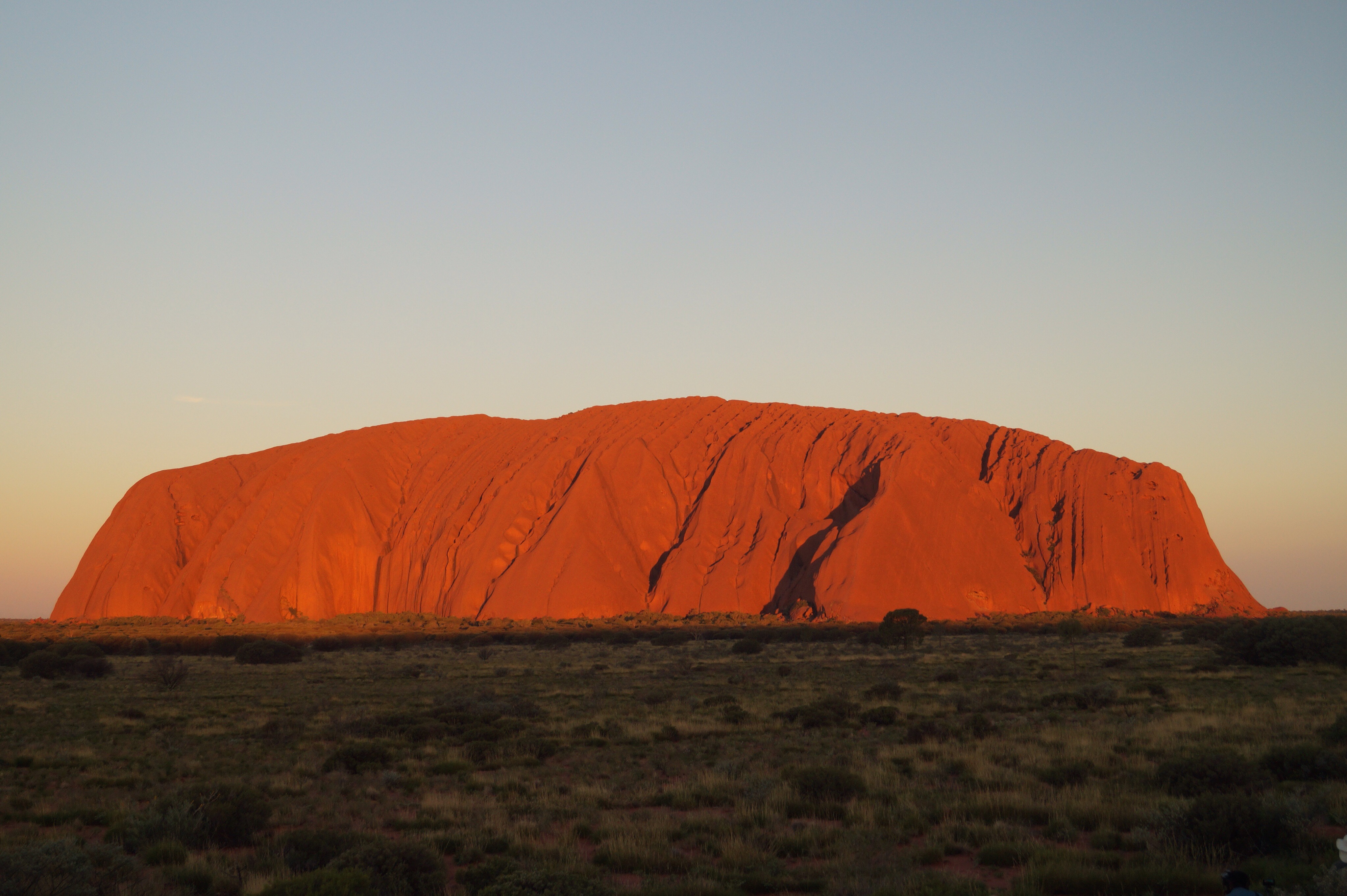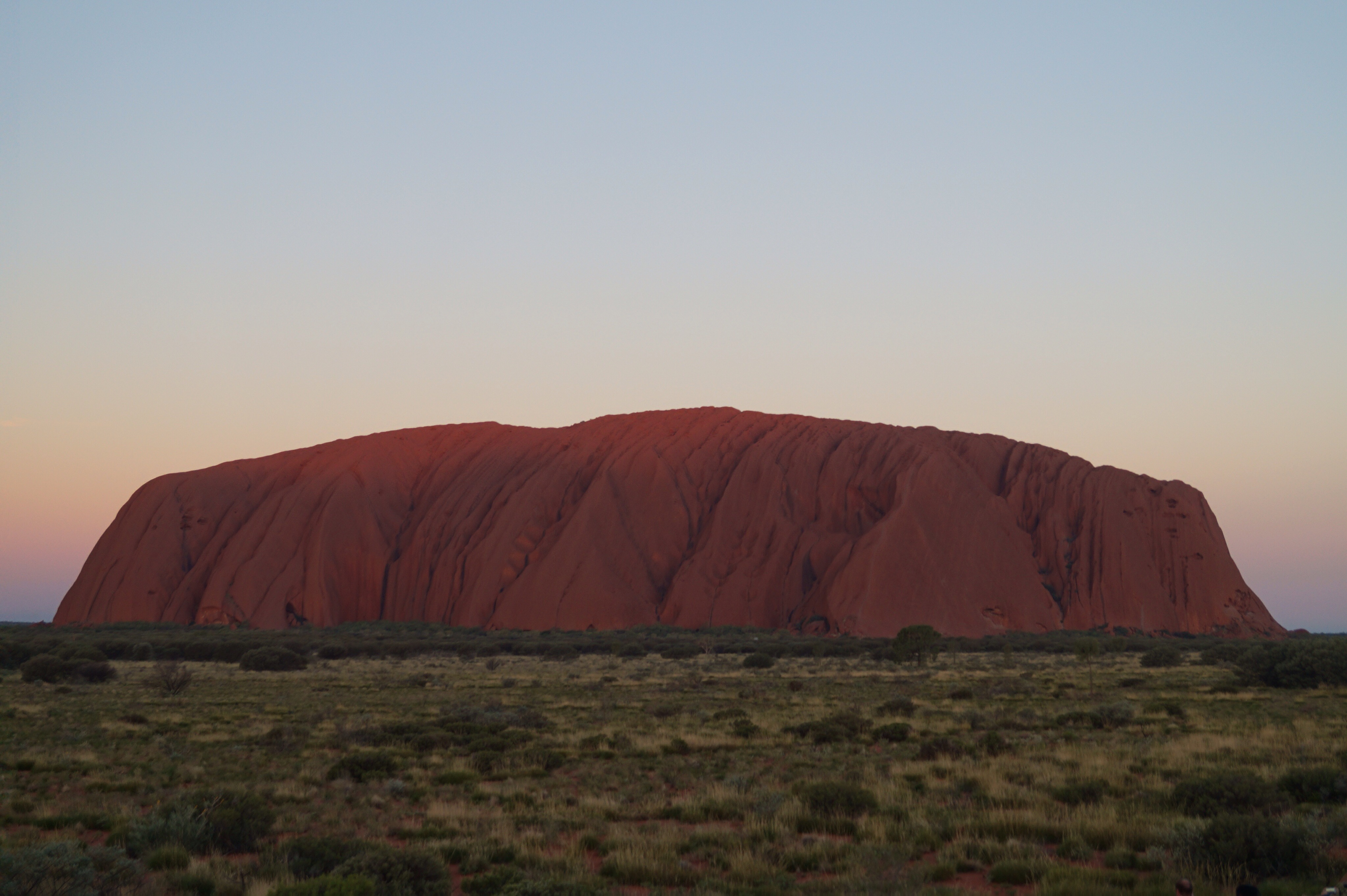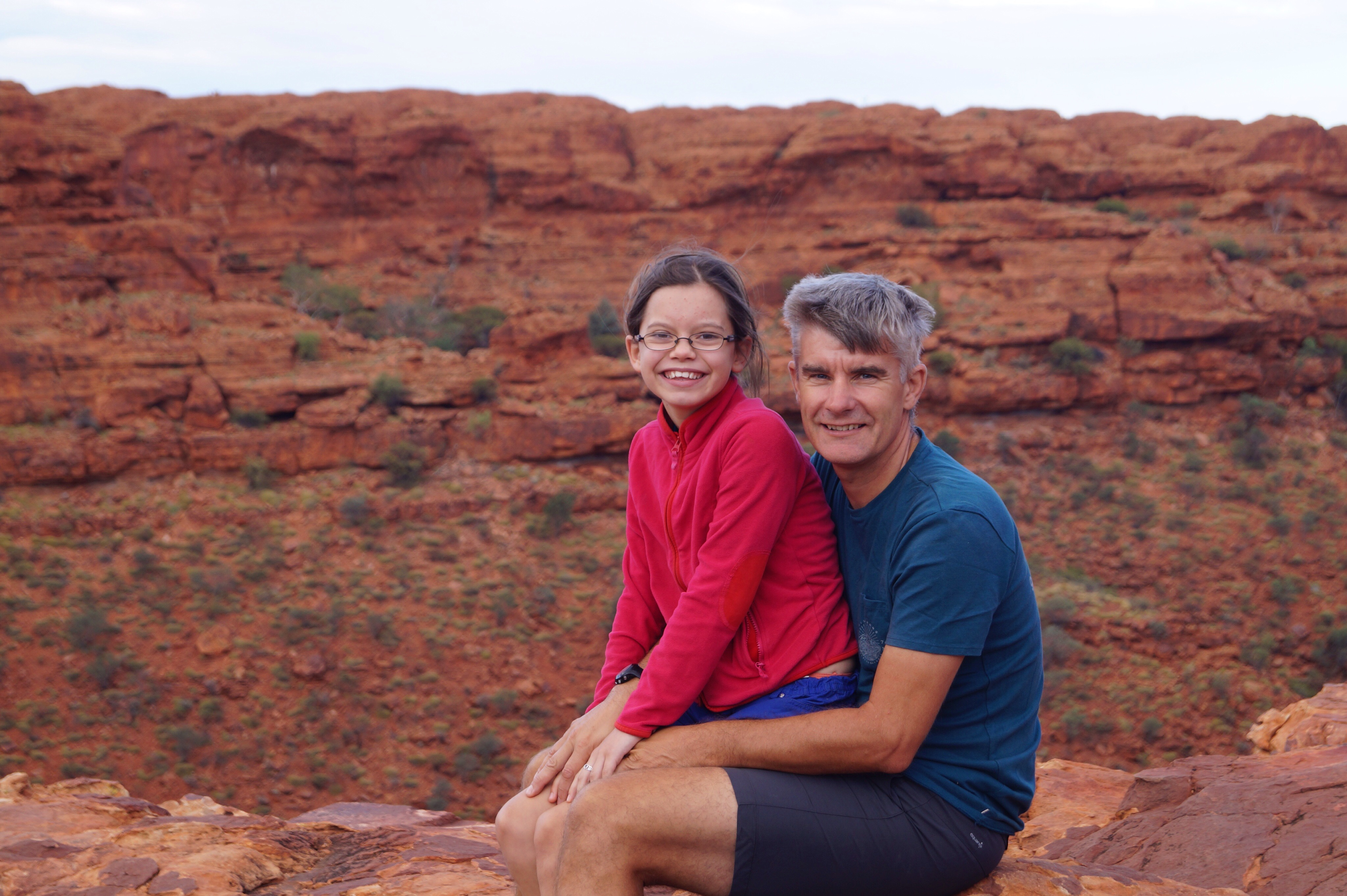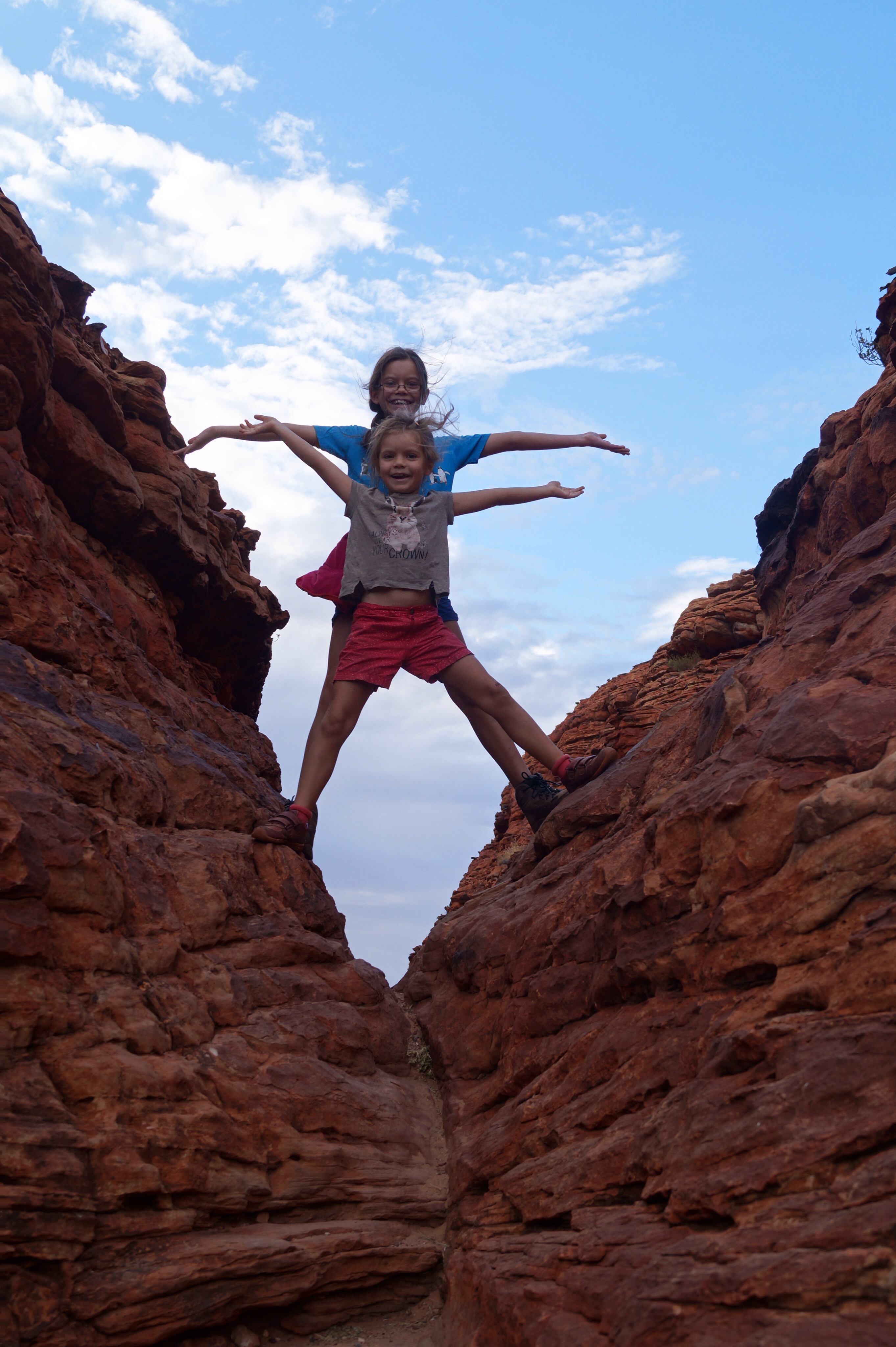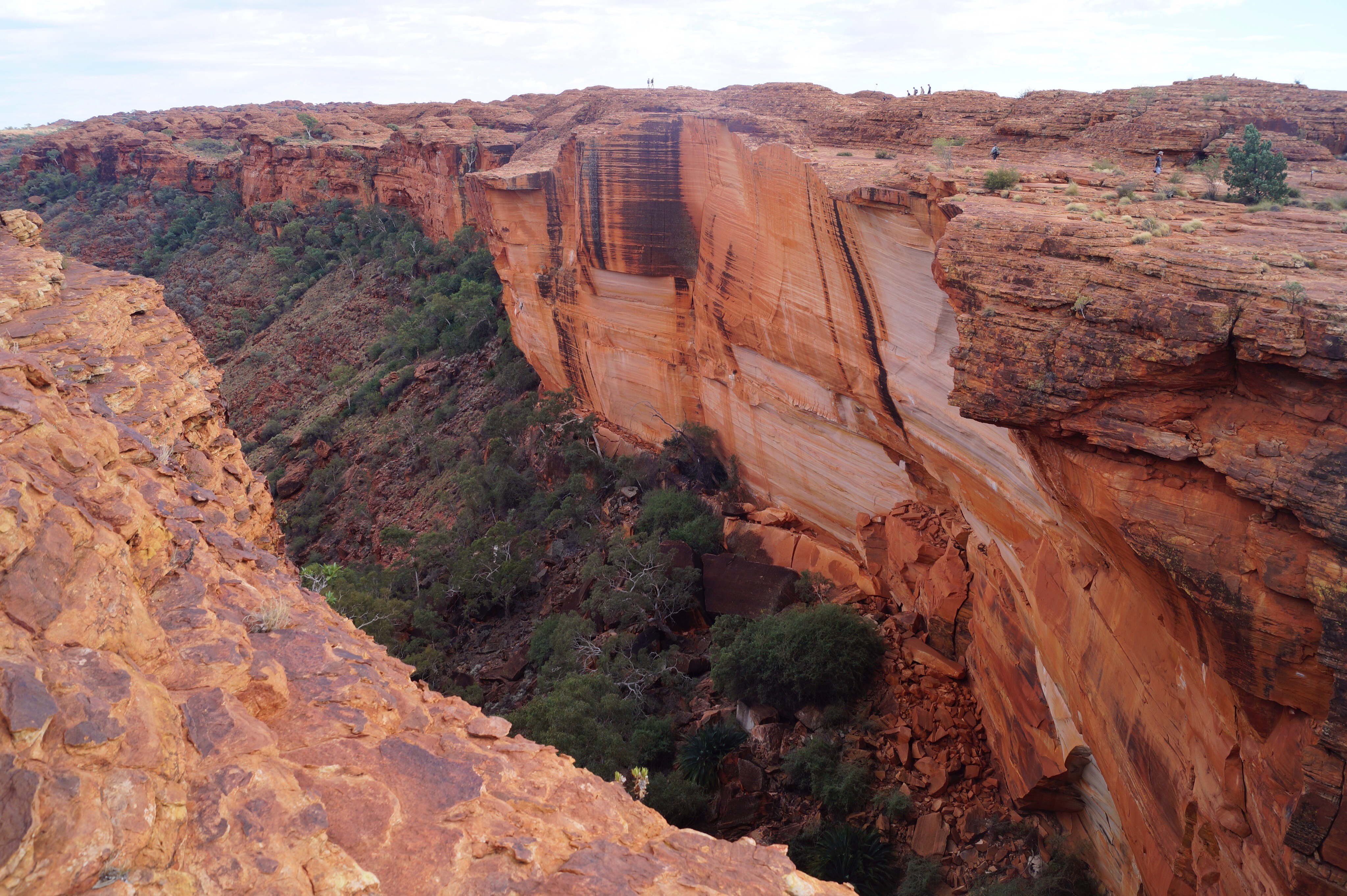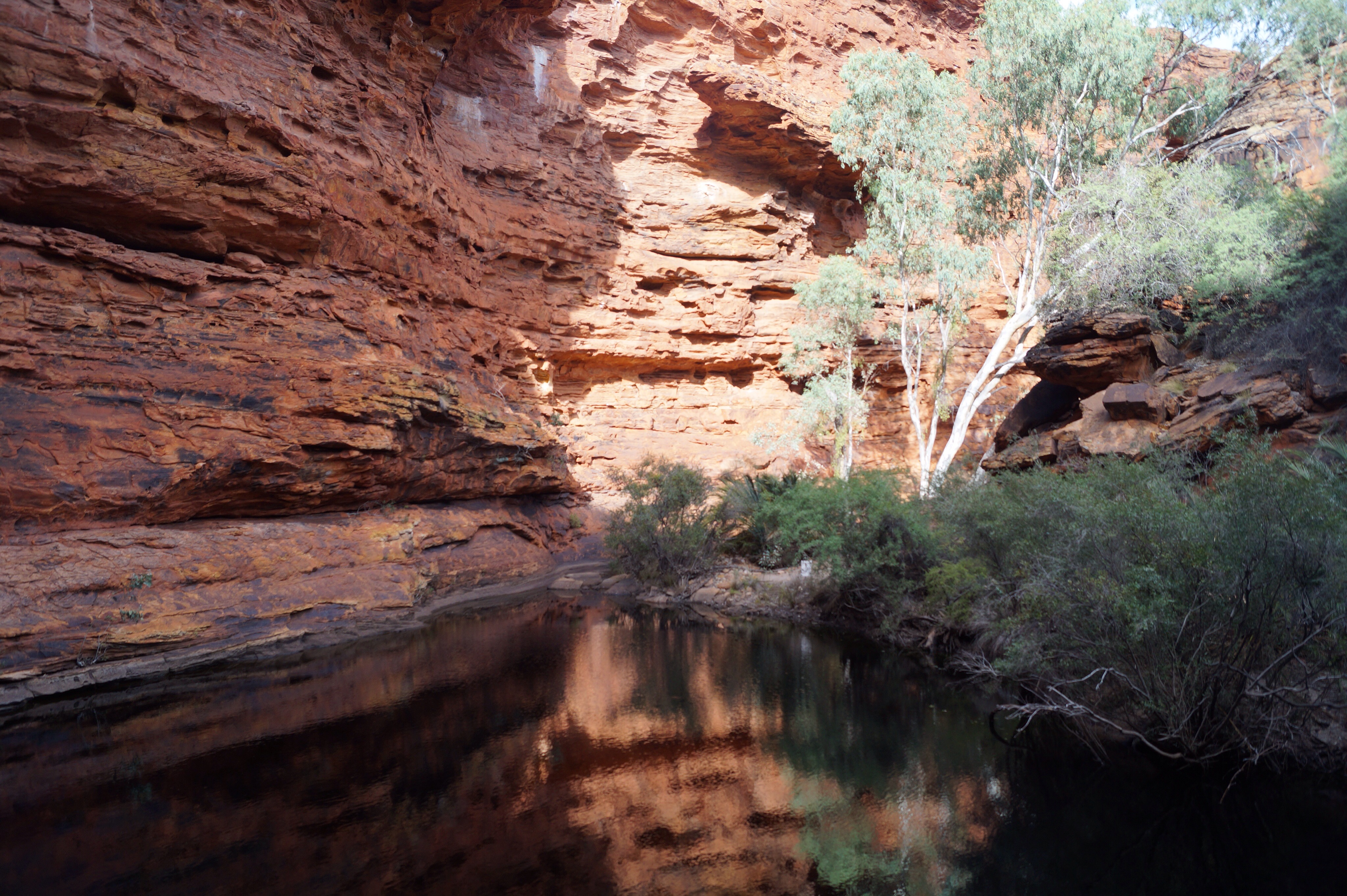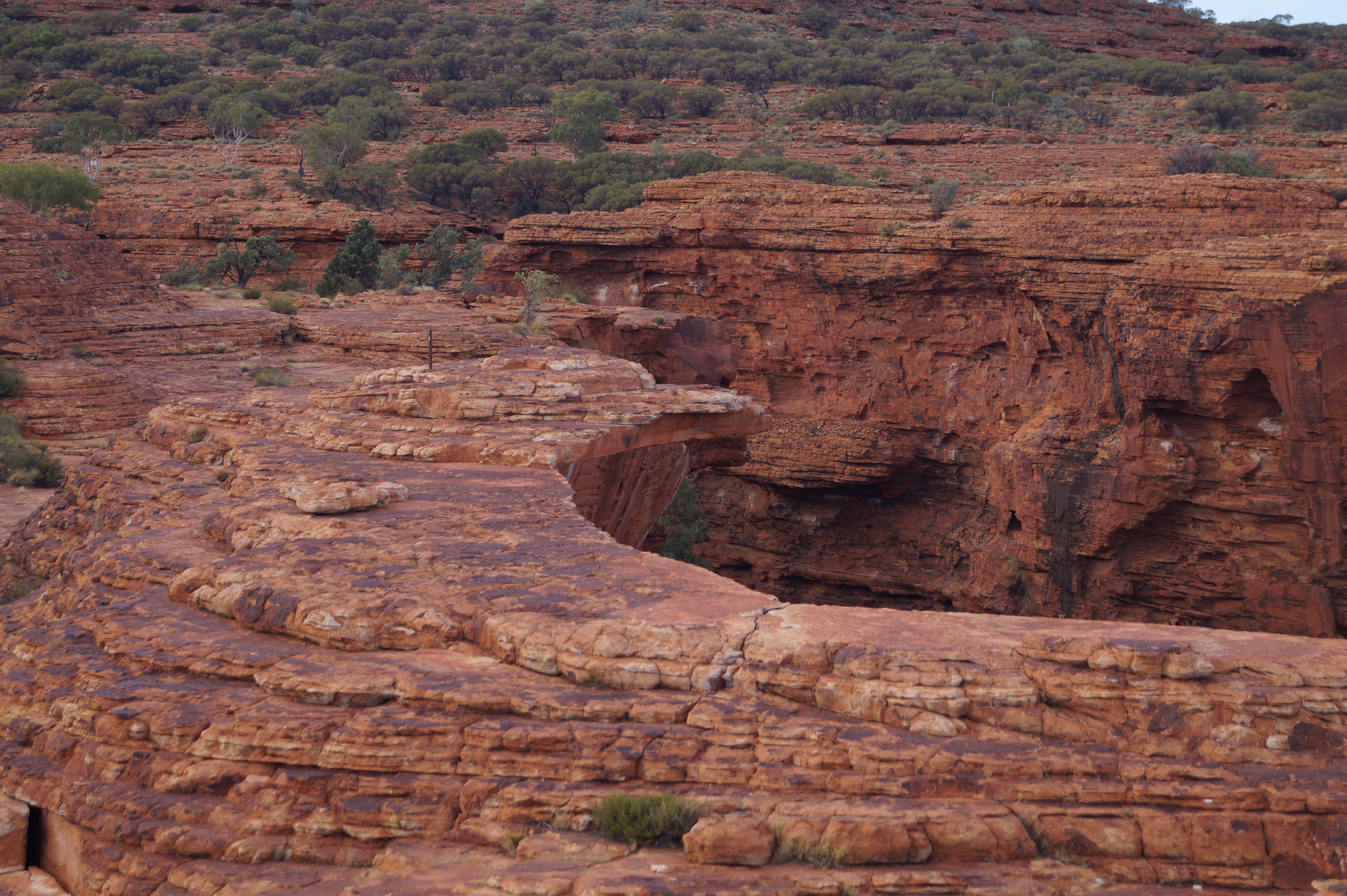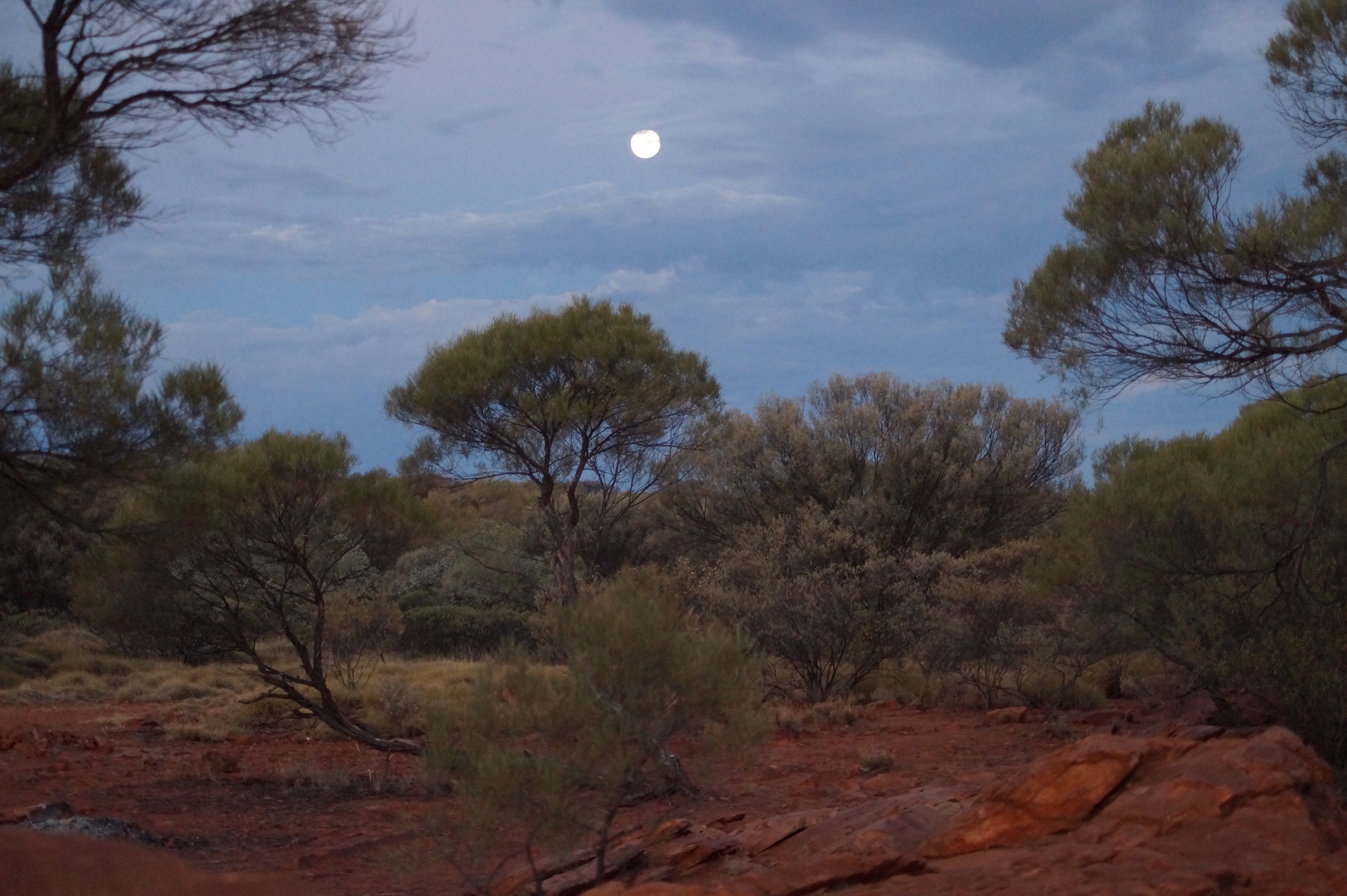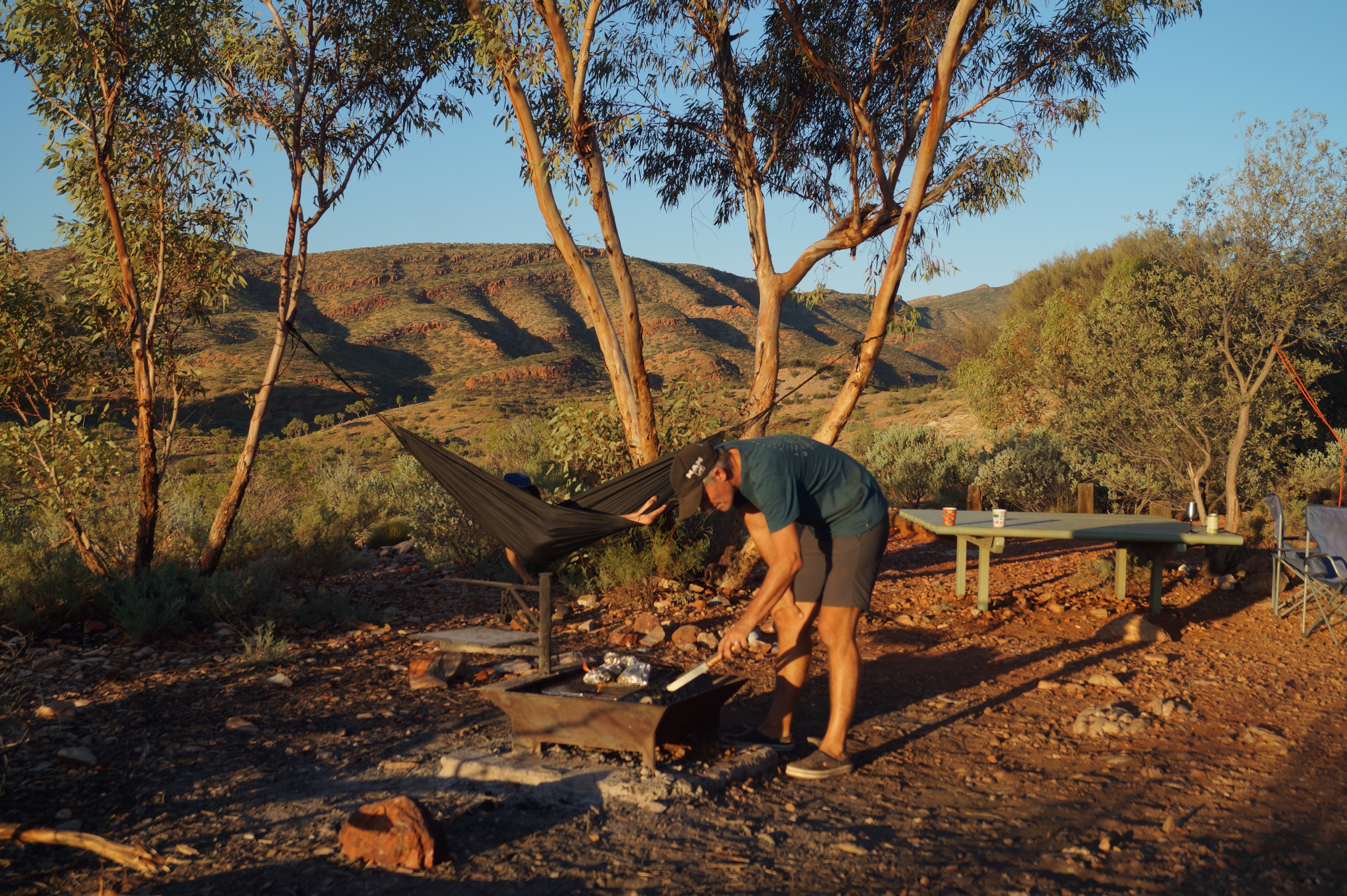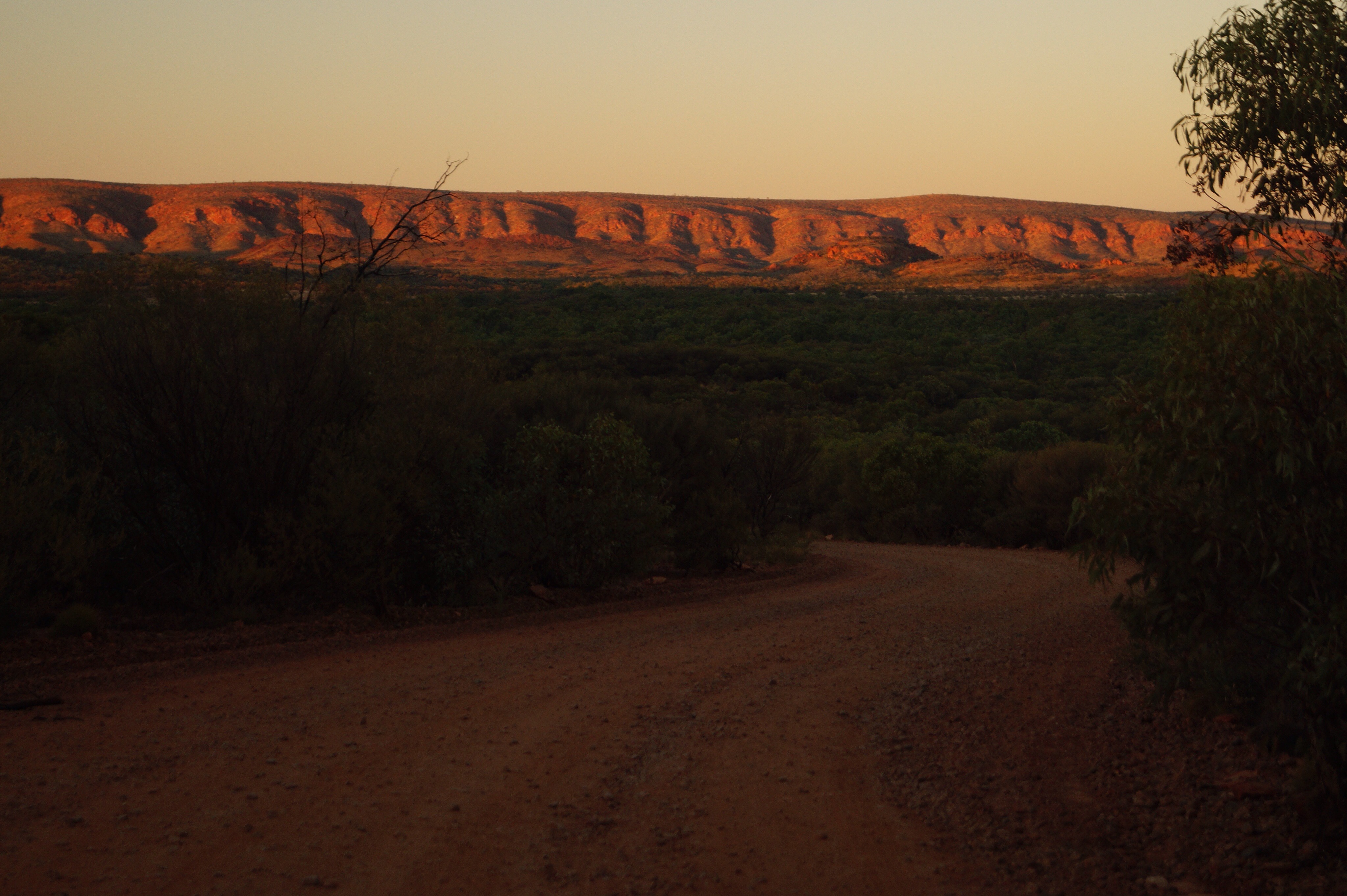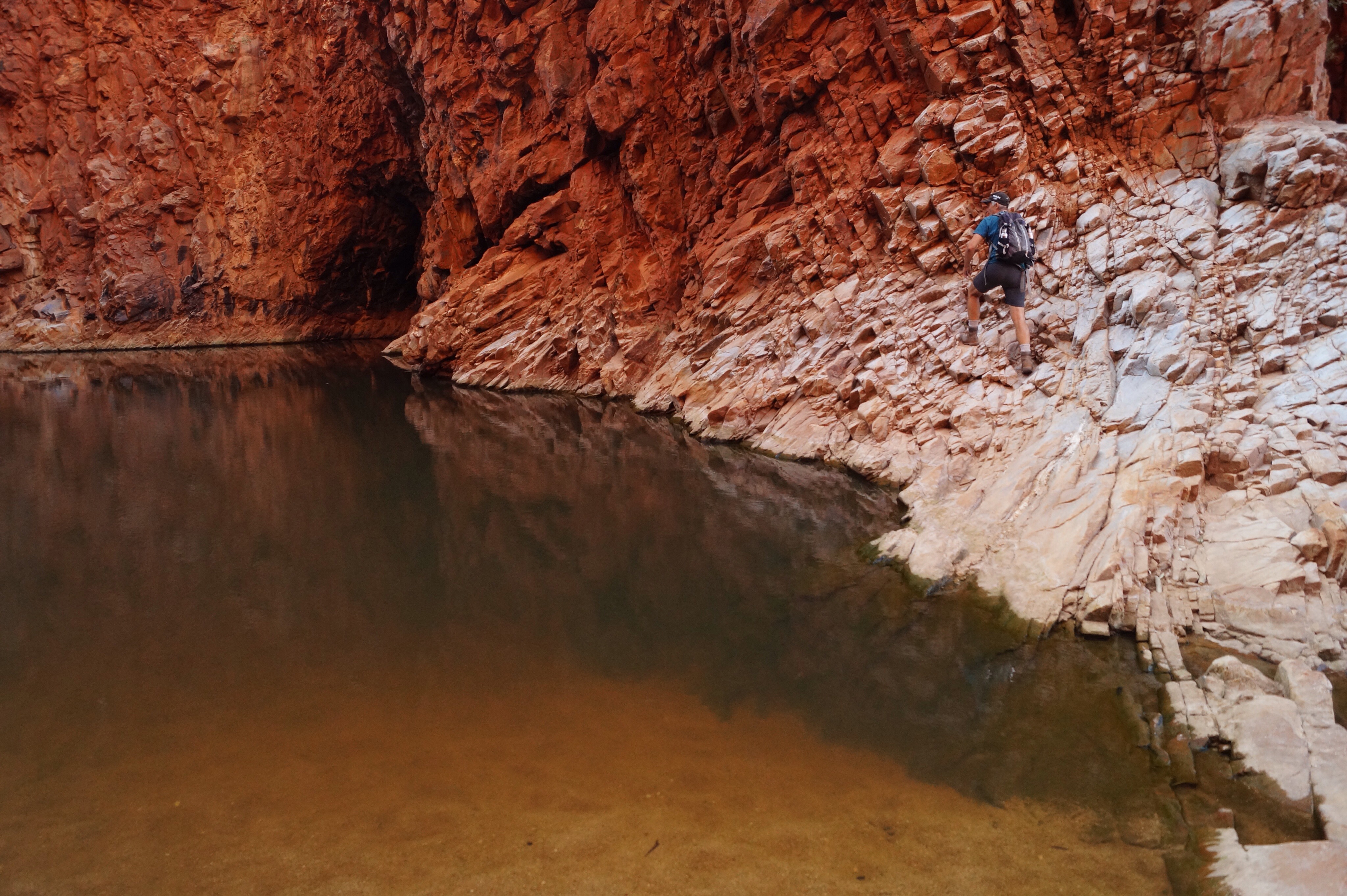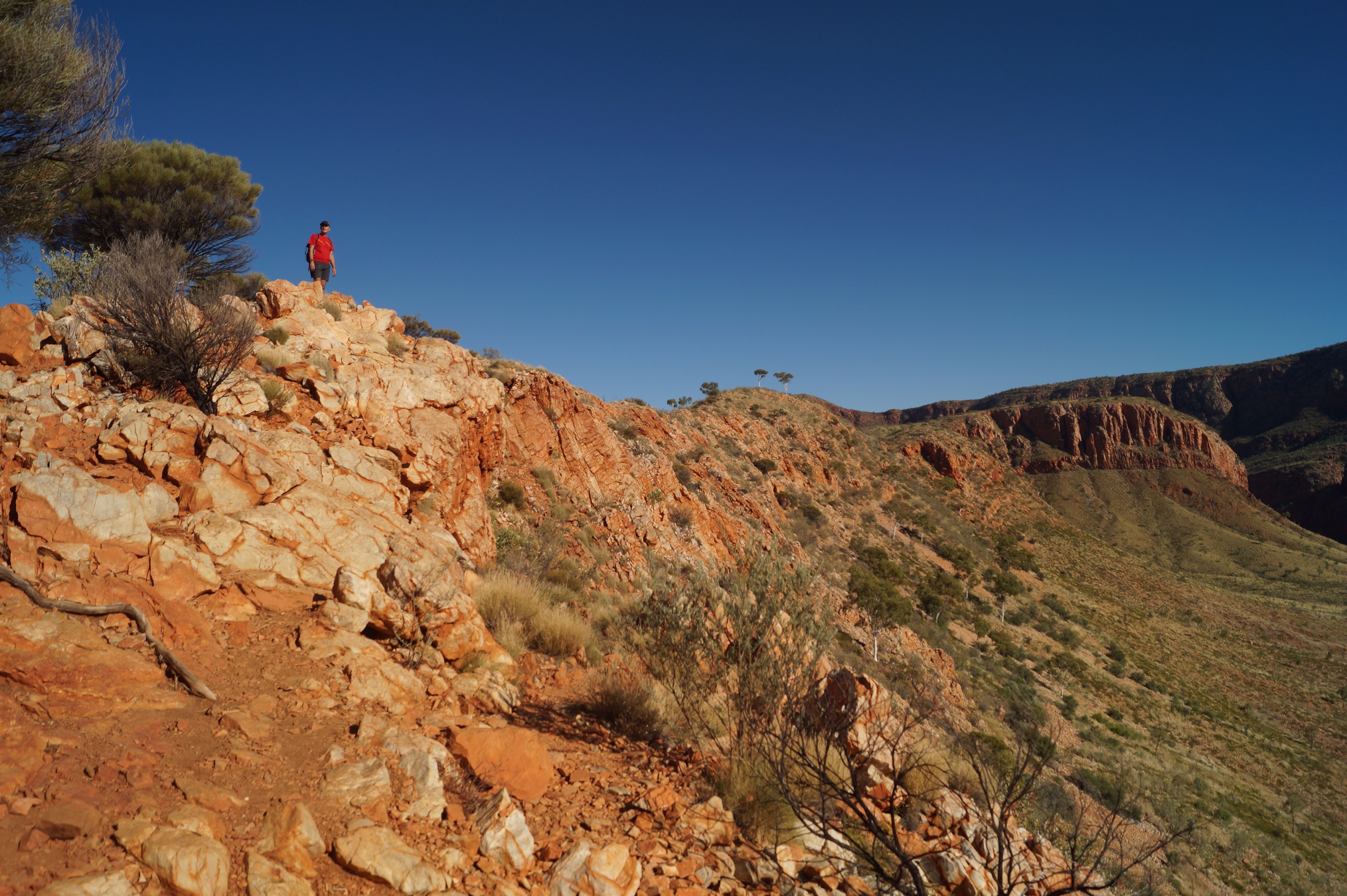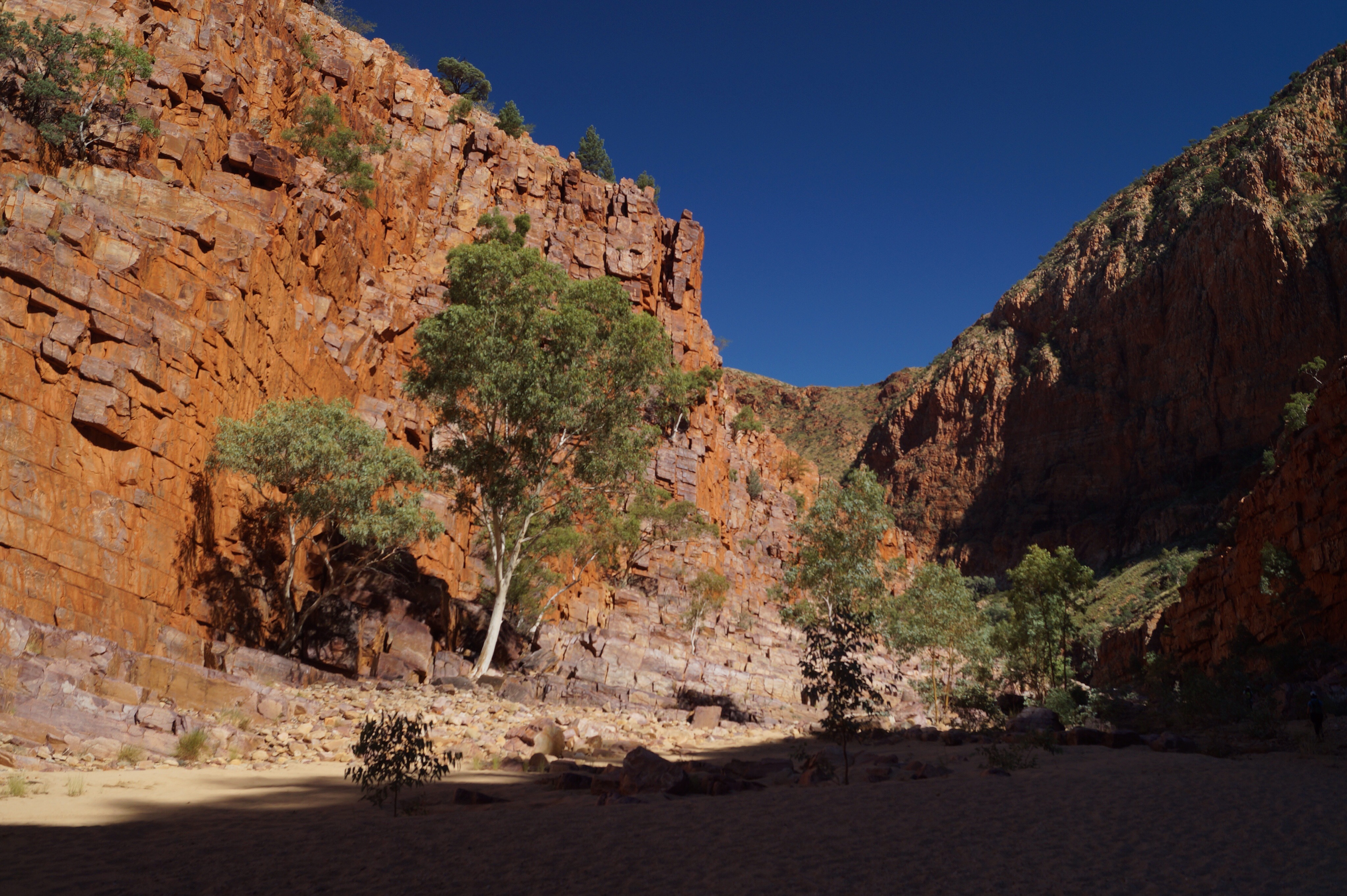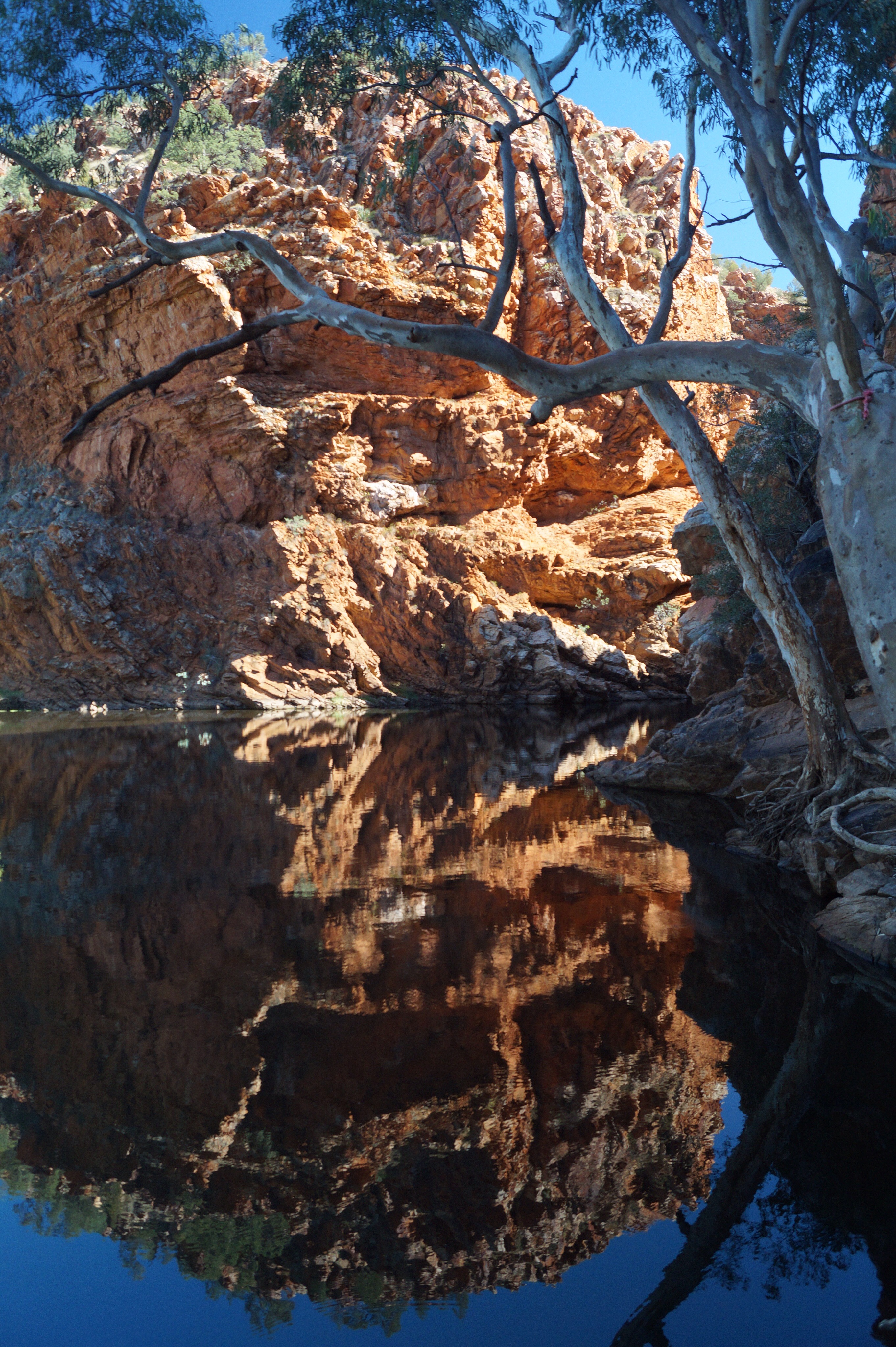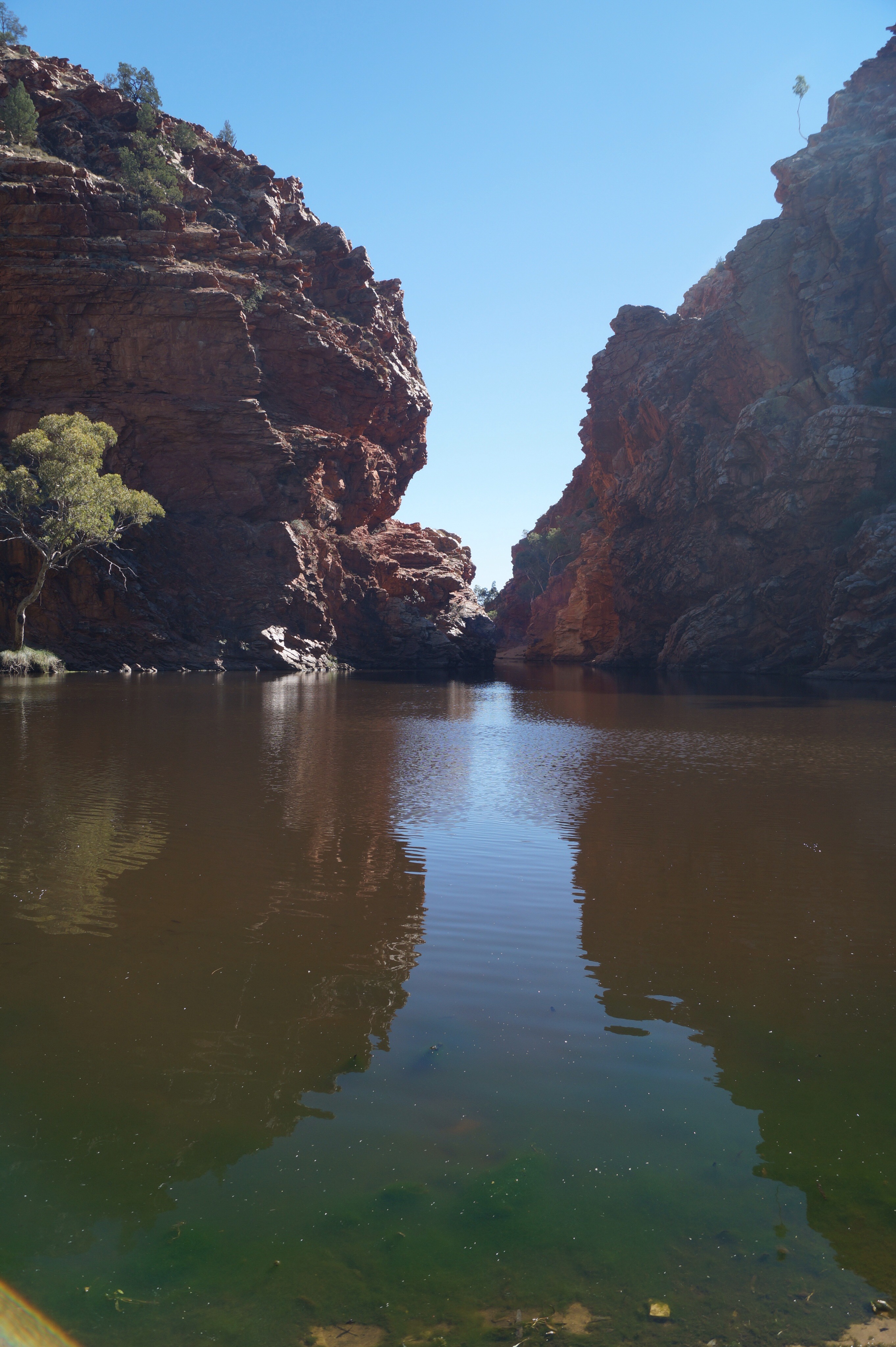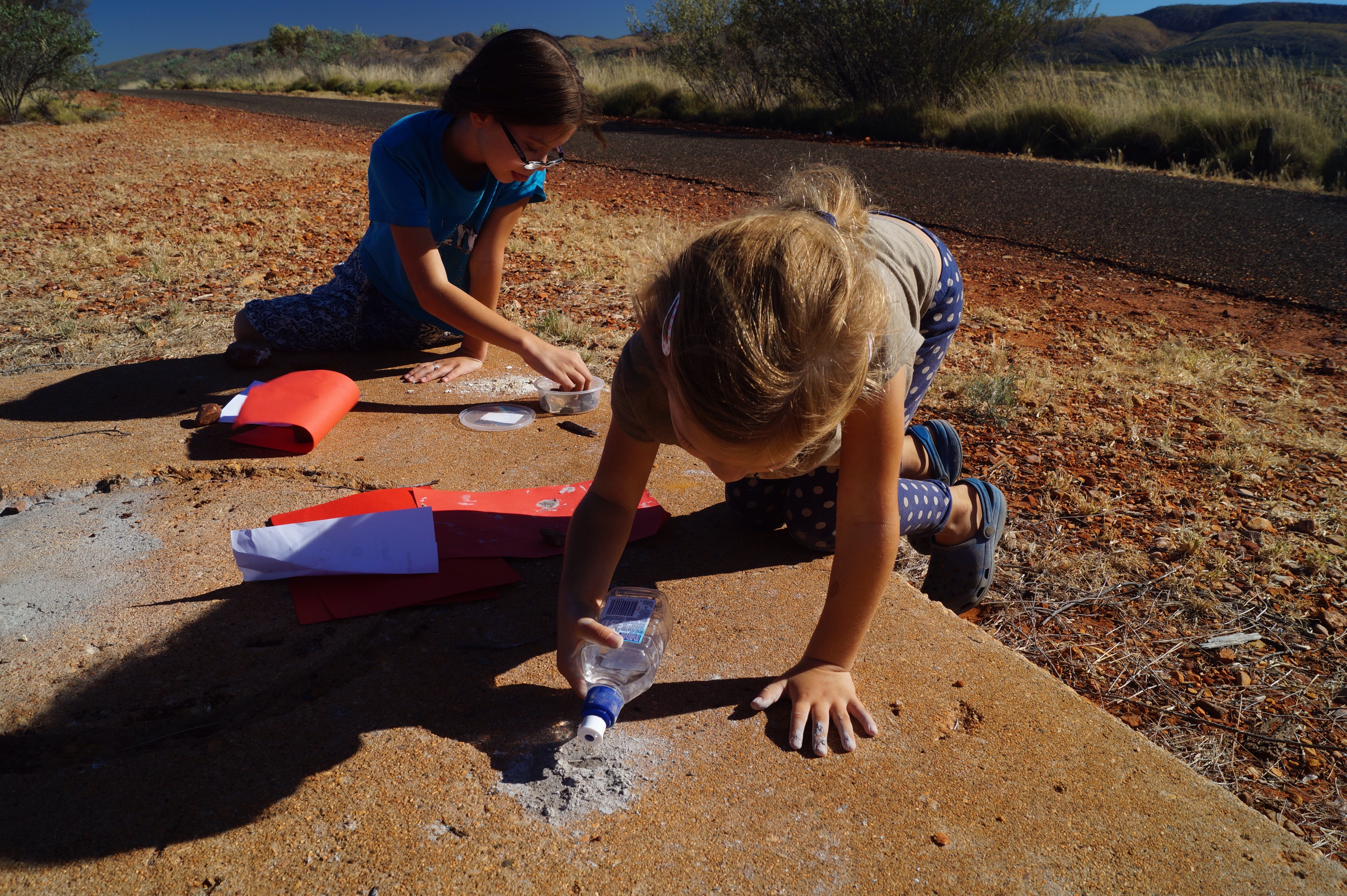"Alice Springs. Alice is a bonza place, oh my word. A girl's got everything in Alice, two picture houses, shops for everything, fruit, ice-cream, fresh milk,...swimming-pool,....and nice houses to live in. Alice is a bonza town,"
A Town Like Alice by Nevil Shute
I reread the book "A Town Like Alice" as we made our way across the Outback a few weeks ago, to remind myself about what Nevil Shute wrote about the town in the late 1940's. We were to find out if Alice was still a "bonza" sort of place nearly 70 years later, as we found ourselves there far, far longer than we expected.
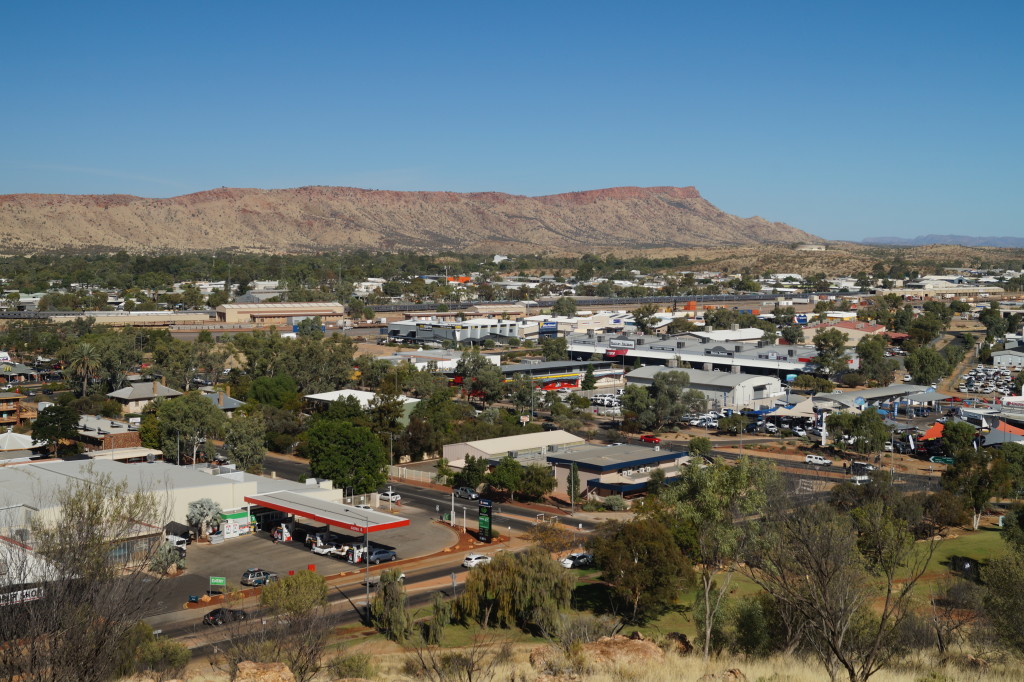
It had started off so well, we had looped back to Alice Springs after our sojourn at Uluru and the MacDonell Ranges to restock. We had a quick night in the same caravan park we had been the previous week for washing and water filling, after school we piled in the front.
Steve turned the key....nothing. It didn't even turn over. He tried again a few more times....still nothing. A whole series of warning lights on the dashboard lit up...then the whole lot went black. Bugger!!
With exploration, we found out it was what we had feared - battery problems. After some fiddling, Steve decided to give it one last time before he called the garage. This time not only did the truck not turn over but there was a massive BANG, that nearly gave our poor neighbours a heart attack. The explosion had caused a big chunk of the battery lid to come off. Double bugger!!
The garage confirmed that both truck batteries were shot and they could order new ones. This is when it was brought home to us, how far Alice Springs is from the more populated coast and just how big Australia is. Replacements were located over 1,500 kms away in Adelaide and would take 6 days to come by road train, the May Day long weekend in the middle slowed things down a bit. Now all we had to do was find things to do in Alice for a week.
We are just so, so thankful that the batteries gave up where they did. For the 10 days before we had been camping out in the desert, often several kilometres from a dirt road, with no mobile signal. We have an emergency satellite beacon but this would have been a mechanical issue not an emergency. We had planned to head north to Darwin, although there is a paved highway the distance is huge; population is very low and widely, widely spaced. We saw several vehicles being brought into the campsite on the back of recovery trucks, after being rescued from hundreds of kilometres away. So to break down in a clean; well run campsite; just outside a town; with friendly neighbours; and they even had good wifi (a real rarity in Australian sites, we've found) was so lucky.
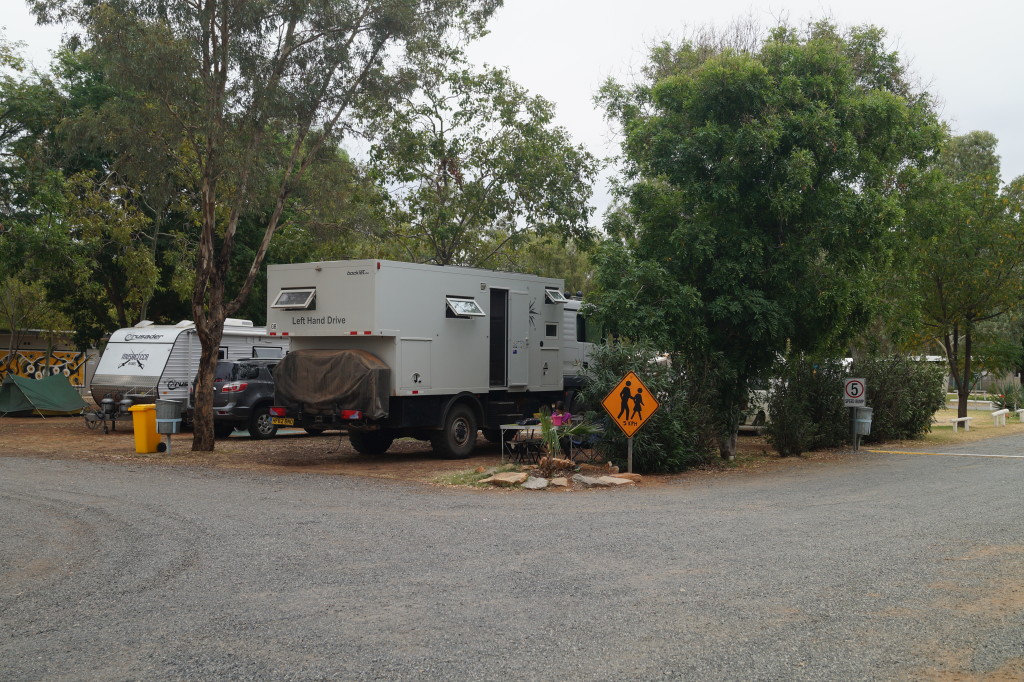
The girls, as always, were completely relaxed about our location and situation. As long as they are with us and living in the truck, they seem completely unfazed by what life brings us on this trip. We filled the week with a trip to the cinema; exploring the historical bits of town; reading; extra school; and the girls and I got to go to church. We ate out a couple of times at a local "club", as they had a free bus from the campsite but didn't indulge in the horse race betting or slot machines.
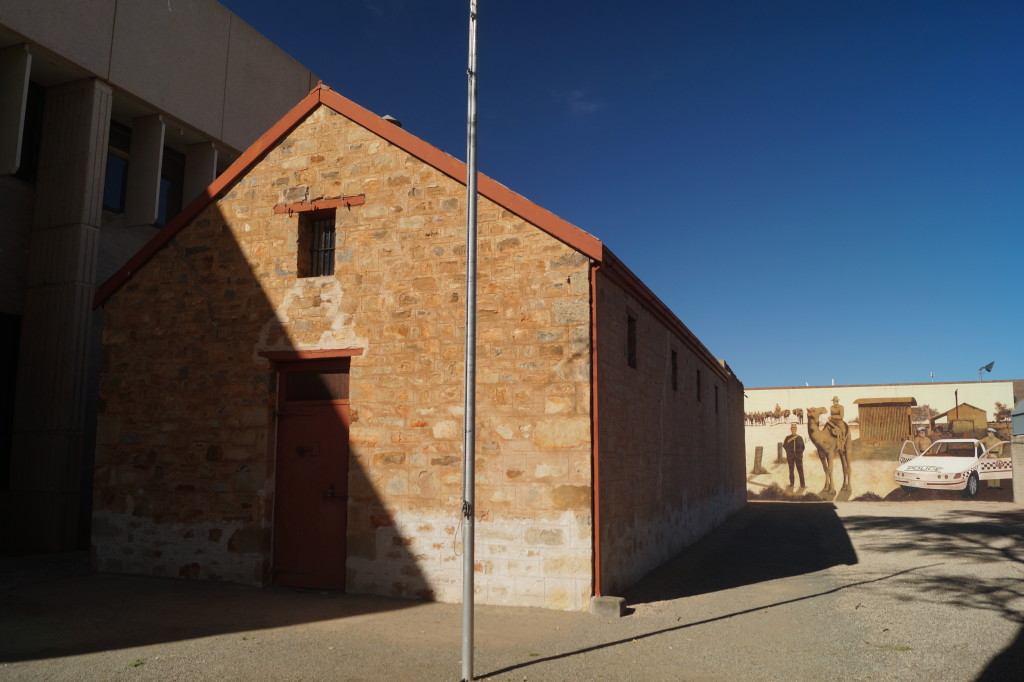
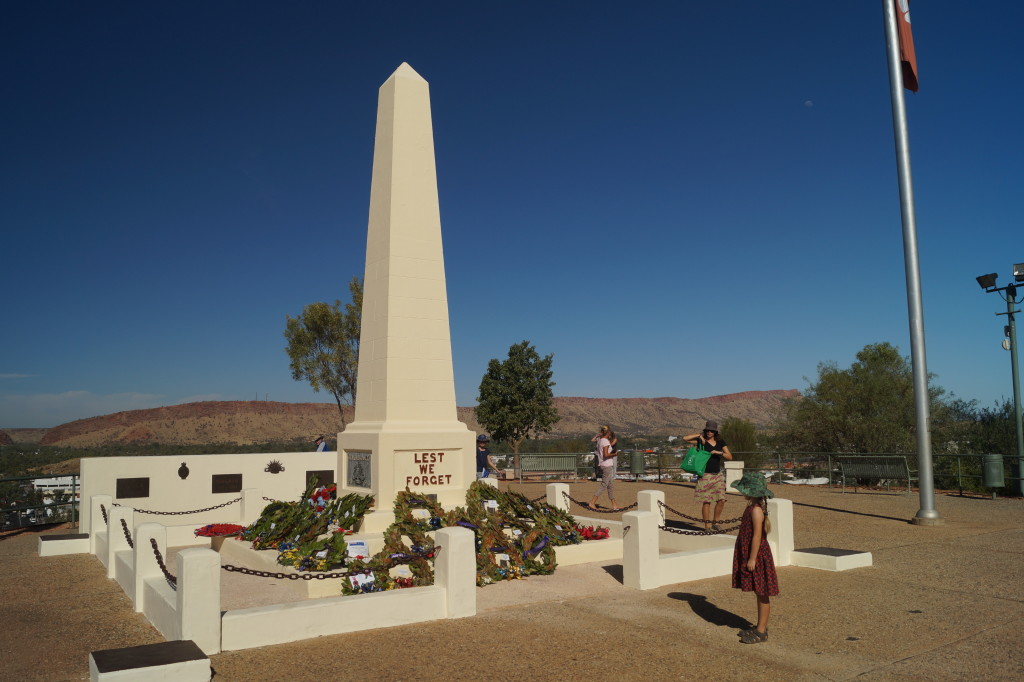
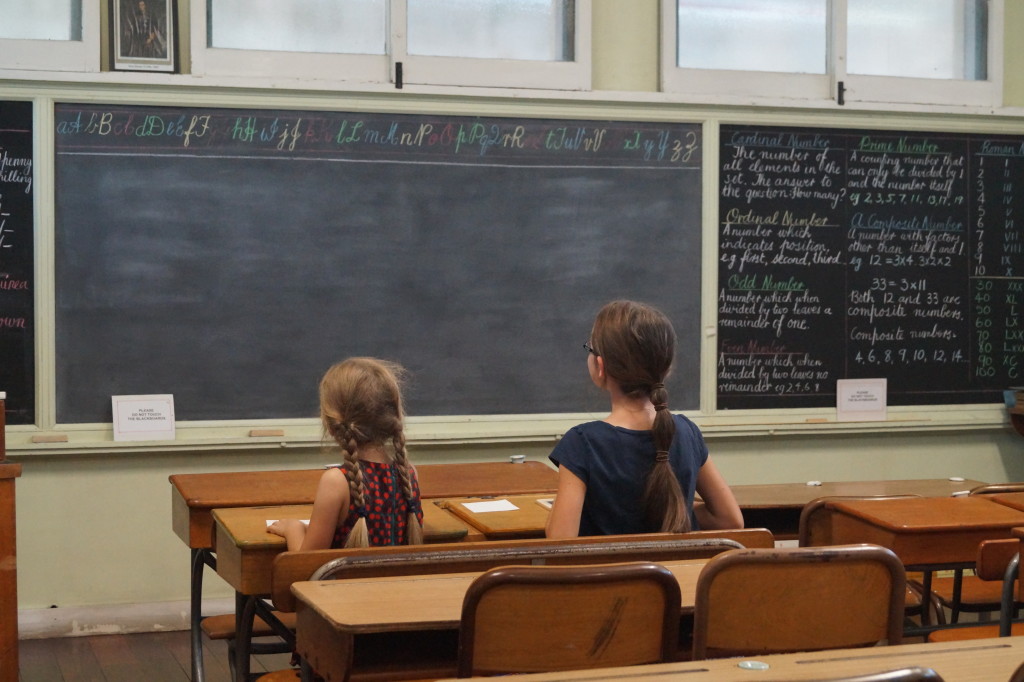
The girl's checking out the local school museum
Alice with its population of about 25,000 seemed a friendly sort of place, although it does have some crime issues and we were advised not to walk around at night. It has a mixed population of white, aboriginal and new immigrants but they all seem to get on pretty well. The town is also a service centre for a huge area around it. This was brought home at the church we went to, the main pastor was away on his monthly visit to preach at Tennants Creek, a mere 500kms away! On the May Day holiday we went into town to see the Bang Tail Muster, a community parade.
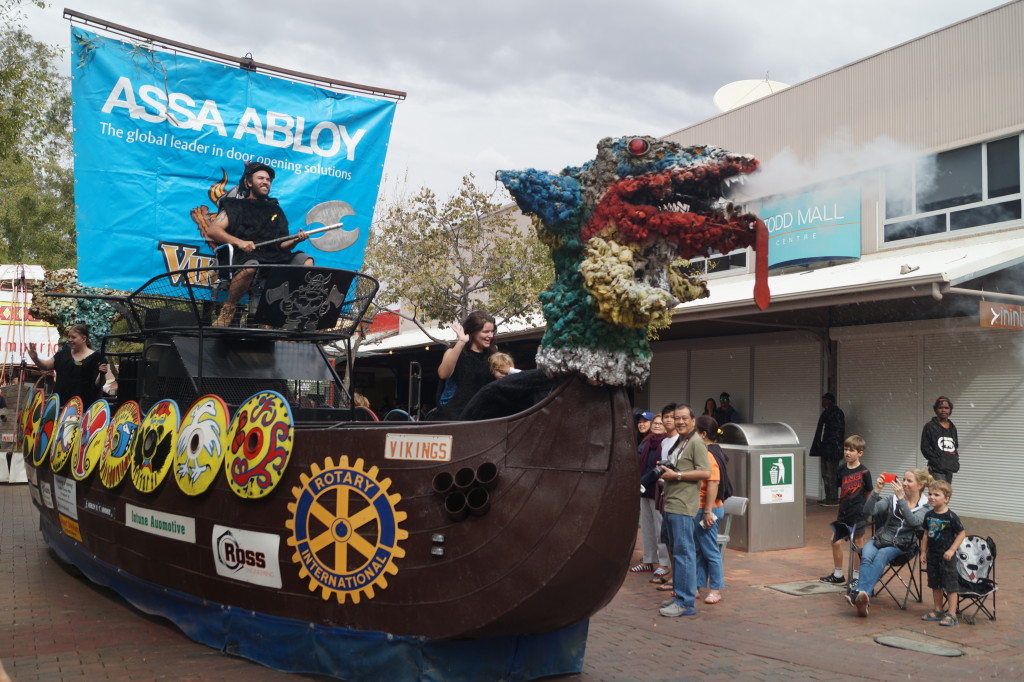
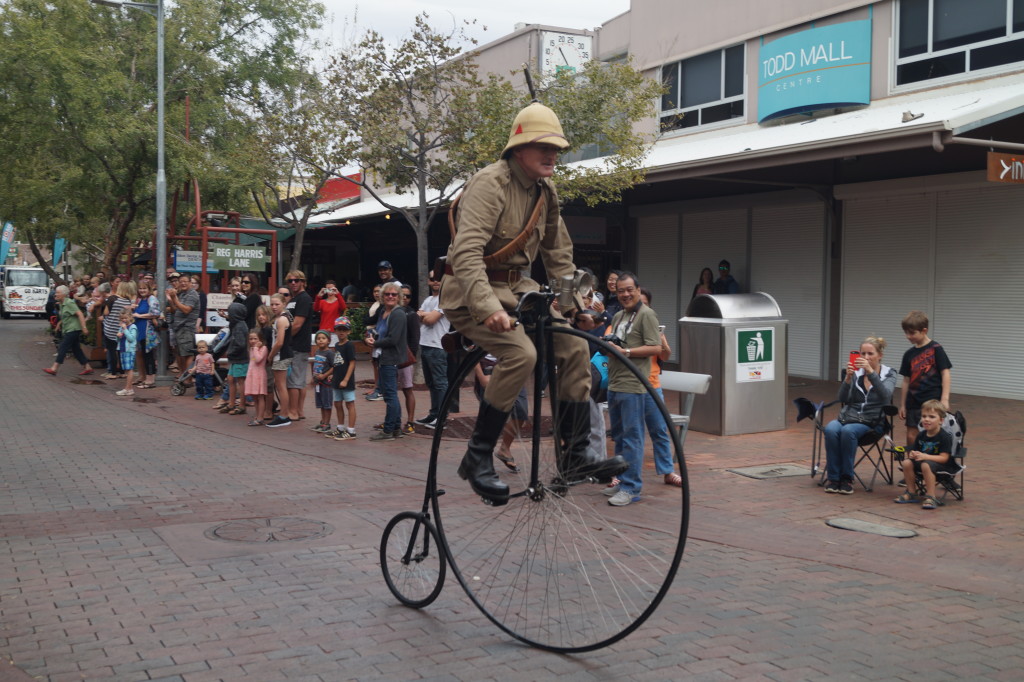
We were all really relieved when the auto-electrician e-mailed to say the batteries had arrived and even more relieved when he fitted them a few hours later and the engine started first time. What a sweet sound!
By then it was too late to take our planned long drive north, so we decided to check out the main tourist site in Alice, the Telegraph Station. It had been just that little too far to walk there and back in the heat for the girls, earlier in the week. On a practical note, it also gave us a chance to check that the engine actually started a couple of times. Just a few kilometres from the centre of town it felt like you were back in the Outback with red sandstone outcrops; silvery-grey spinifex grasses; and noisy galahs. It interesting to see how the town developed from such a remote outpost. It was part of the Overland Telegraph Line which cut the time for a message from London to Australia, a remote part of the Victorian empire, from many months to 3 hours.
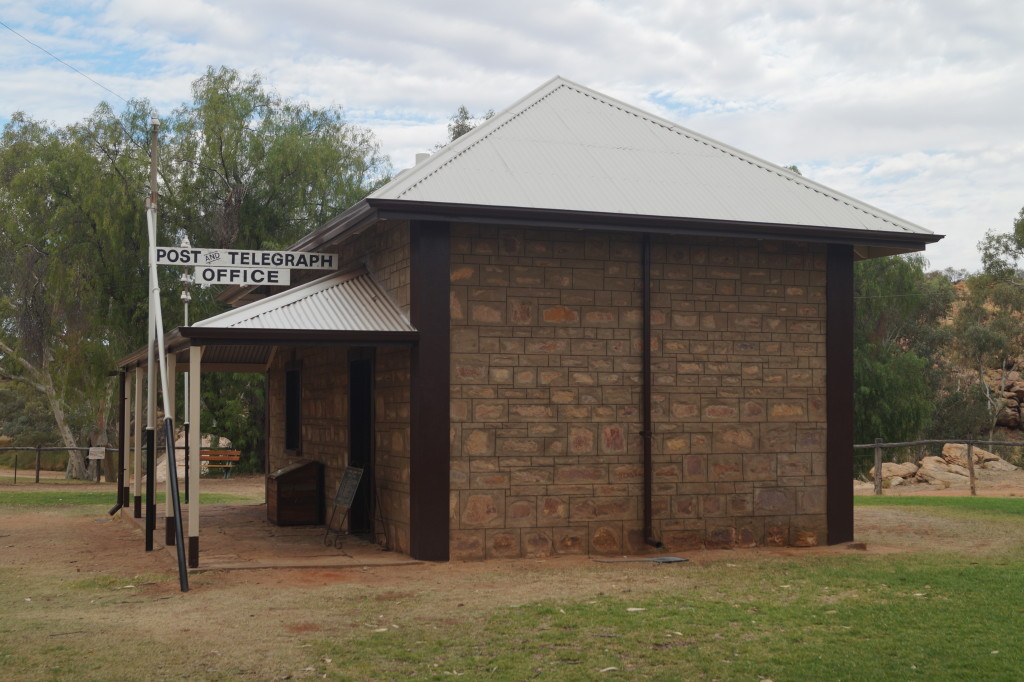
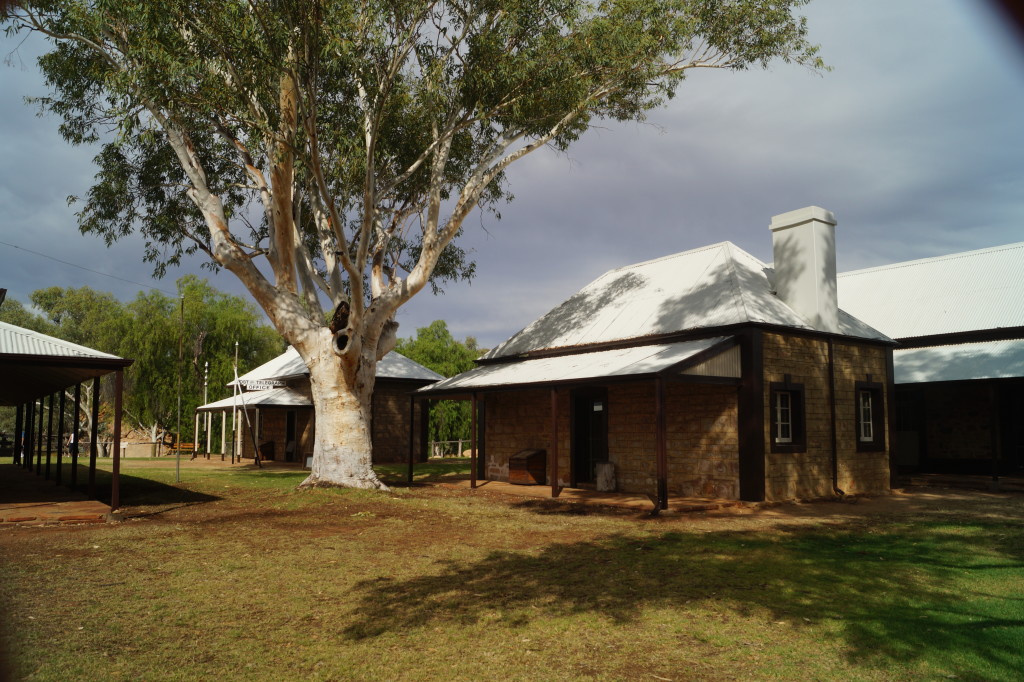
So as we prepared to hit the road, we reflected if Alice lived up to its "bonza” moniker. Yes, I think it did, especially considering it is the middle of absolutely nowhere, but hopefully we won’t get stuck here again.

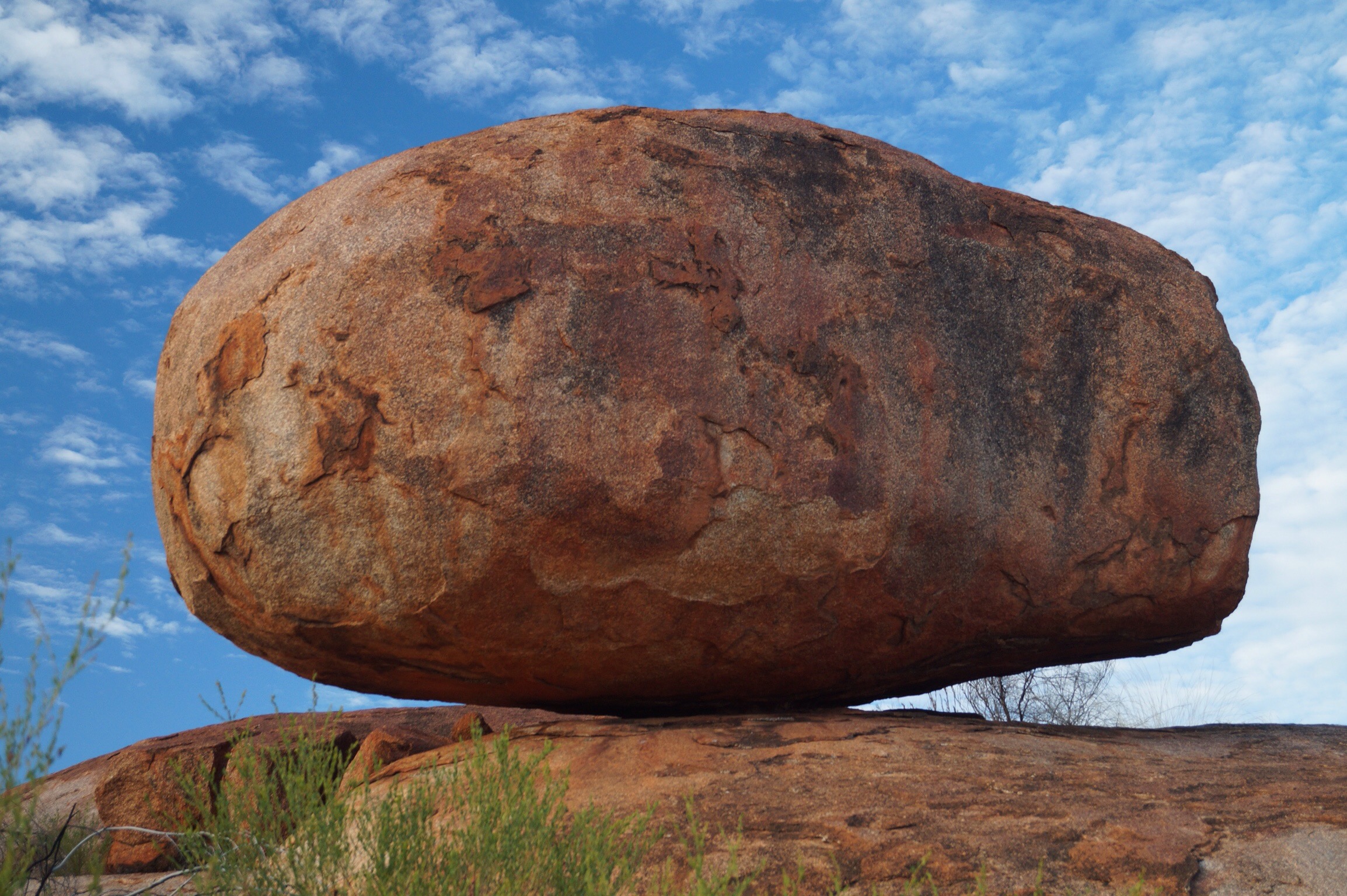
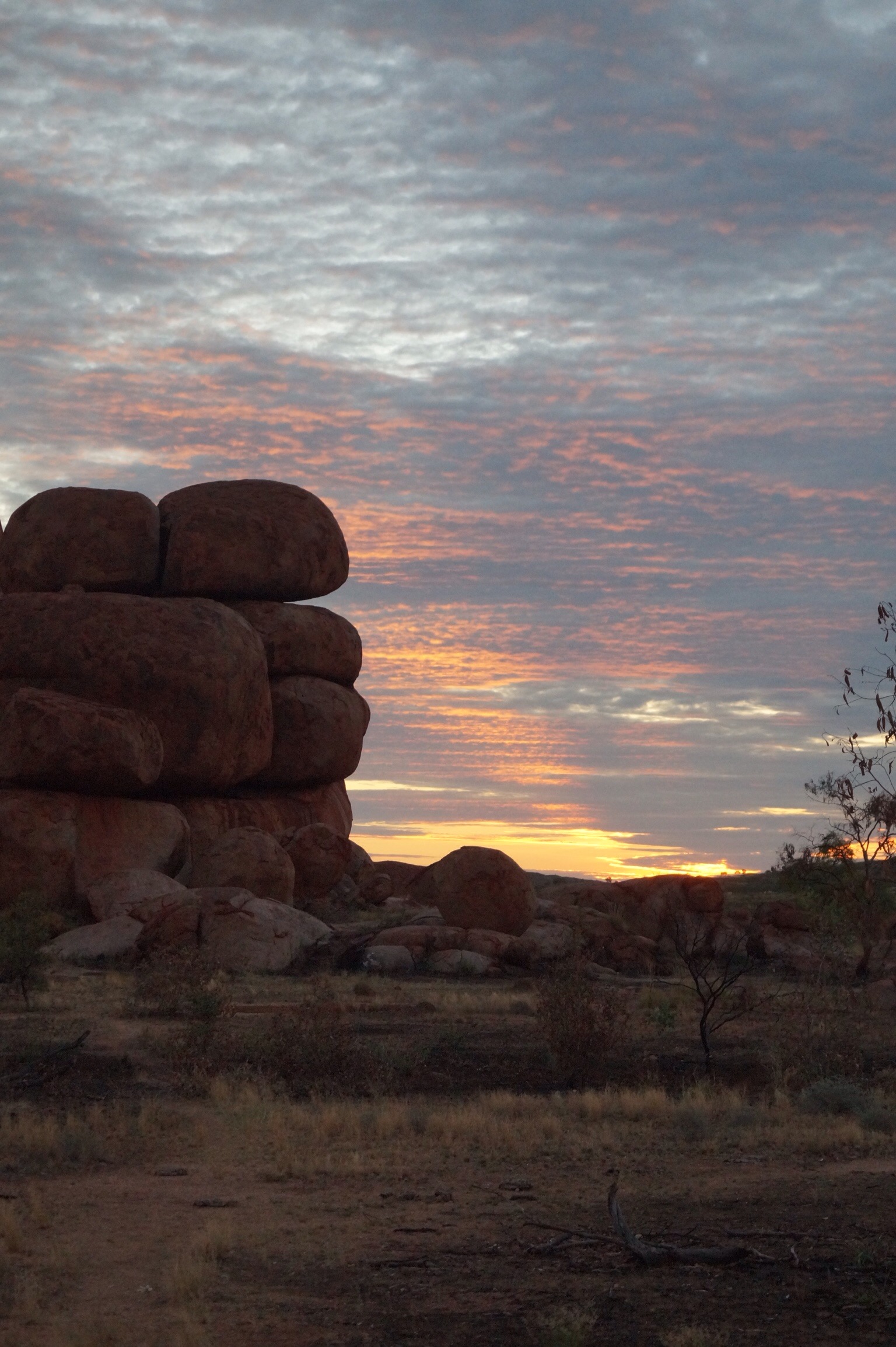
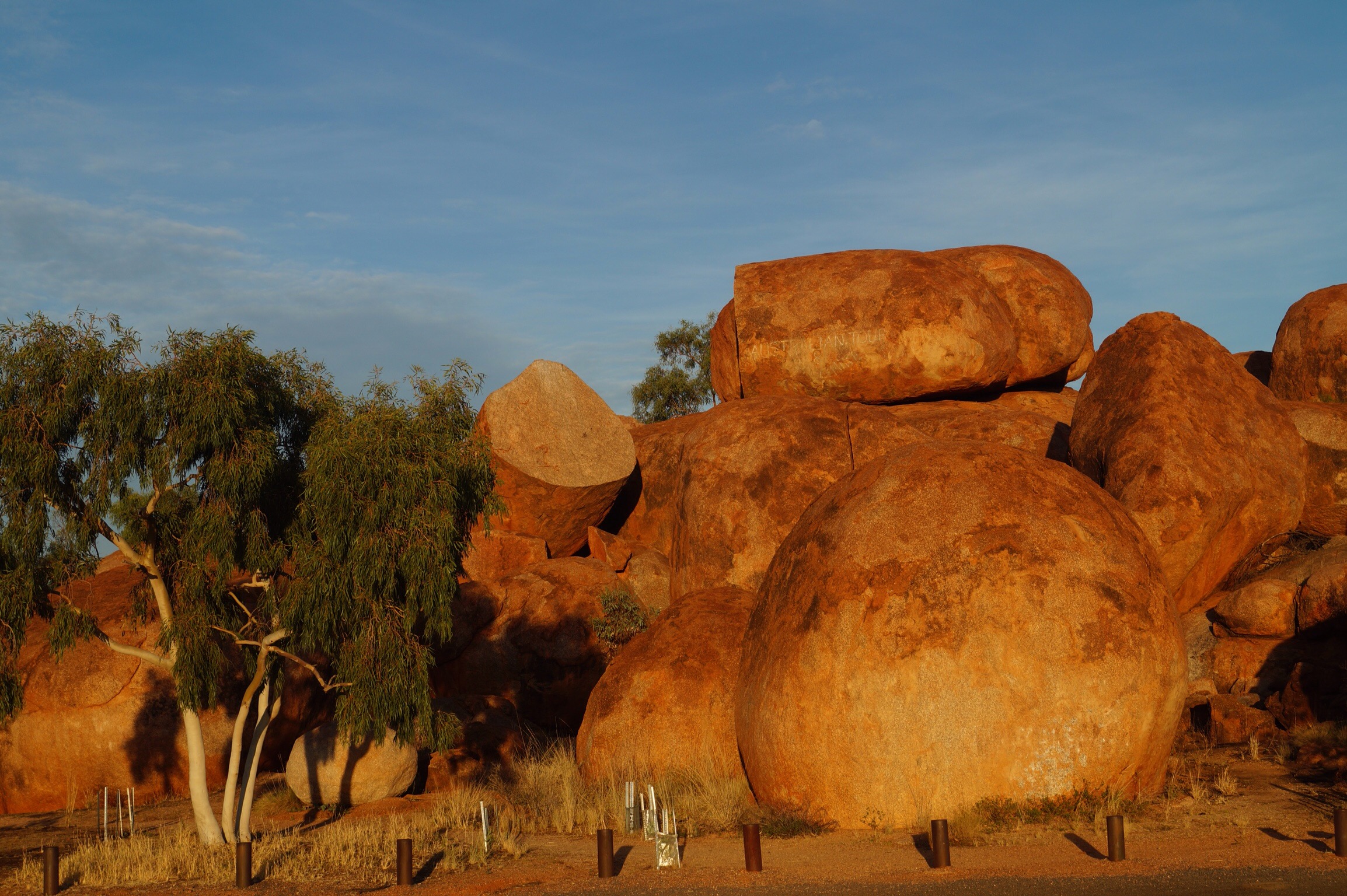
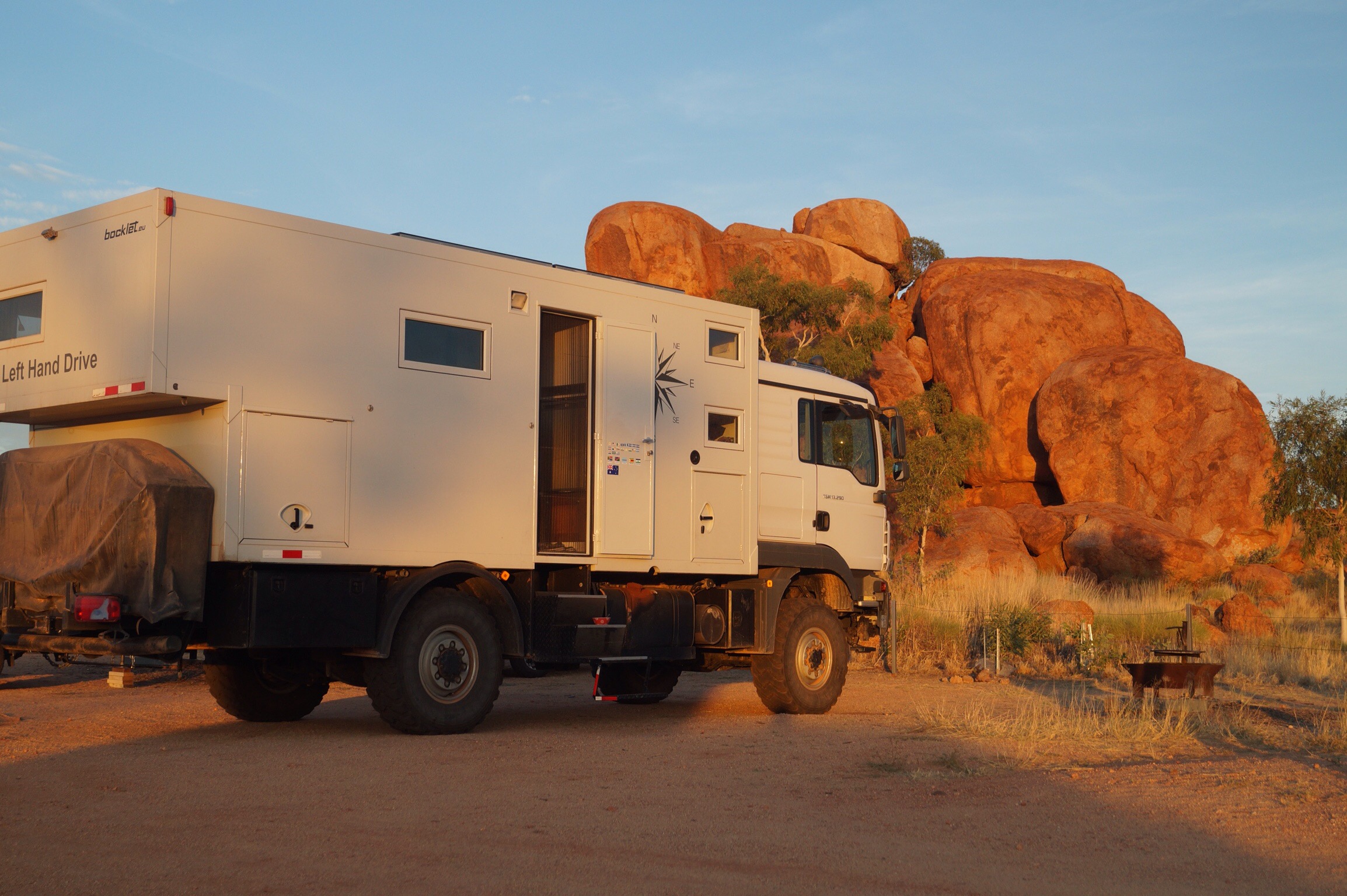 We broke the next day's drive by stopping in Tennant Creek and visiting the Nyinkka Nyunyu Aboriginal museum and gallery. This gave an excellent overview of the Warumungu people who lived in the area. There were a series of displays known as "bush TVs" which depicted life since the Europeans had arrived. It is not a pretty story and it's amazing some of the things that were still been done to these people even in my lifetime. Recently there has been a lot of change and progress with land been handed back to the local community. However there is still a long way to go and traditional Aboriginal life is as far removed as you could get from Modern Australian life. Australia is a land of immigrants and whilst it has its issues as every country does it has welcomed wave after wave of immigration and largely been successful in integrating them. It's a shame there has been less success with the original inhabitants of Australia. The museum also had a walk showing the different bush foods that grow in the desert. It's was interesting to see how life could be sustained in such a harsh environment and how important been able to find water and food was.
We broke the next day's drive by stopping in Tennant Creek and visiting the Nyinkka Nyunyu Aboriginal museum and gallery. This gave an excellent overview of the Warumungu people who lived in the area. There were a series of displays known as "bush TVs" which depicted life since the Europeans had arrived. It is not a pretty story and it's amazing some of the things that were still been done to these people even in my lifetime. Recently there has been a lot of change and progress with land been handed back to the local community. However there is still a long way to go and traditional Aboriginal life is as far removed as you could get from Modern Australian life. Australia is a land of immigrants and whilst it has its issues as every country does it has welcomed wave after wave of immigration and largely been successful in integrating them. It's a shame there has been less success with the original inhabitants of Australia. The museum also had a walk showing the different bush foods that grow in the desert. It's was interesting to see how life could be sustained in such a harsh environment and how important been able to find water and food was.

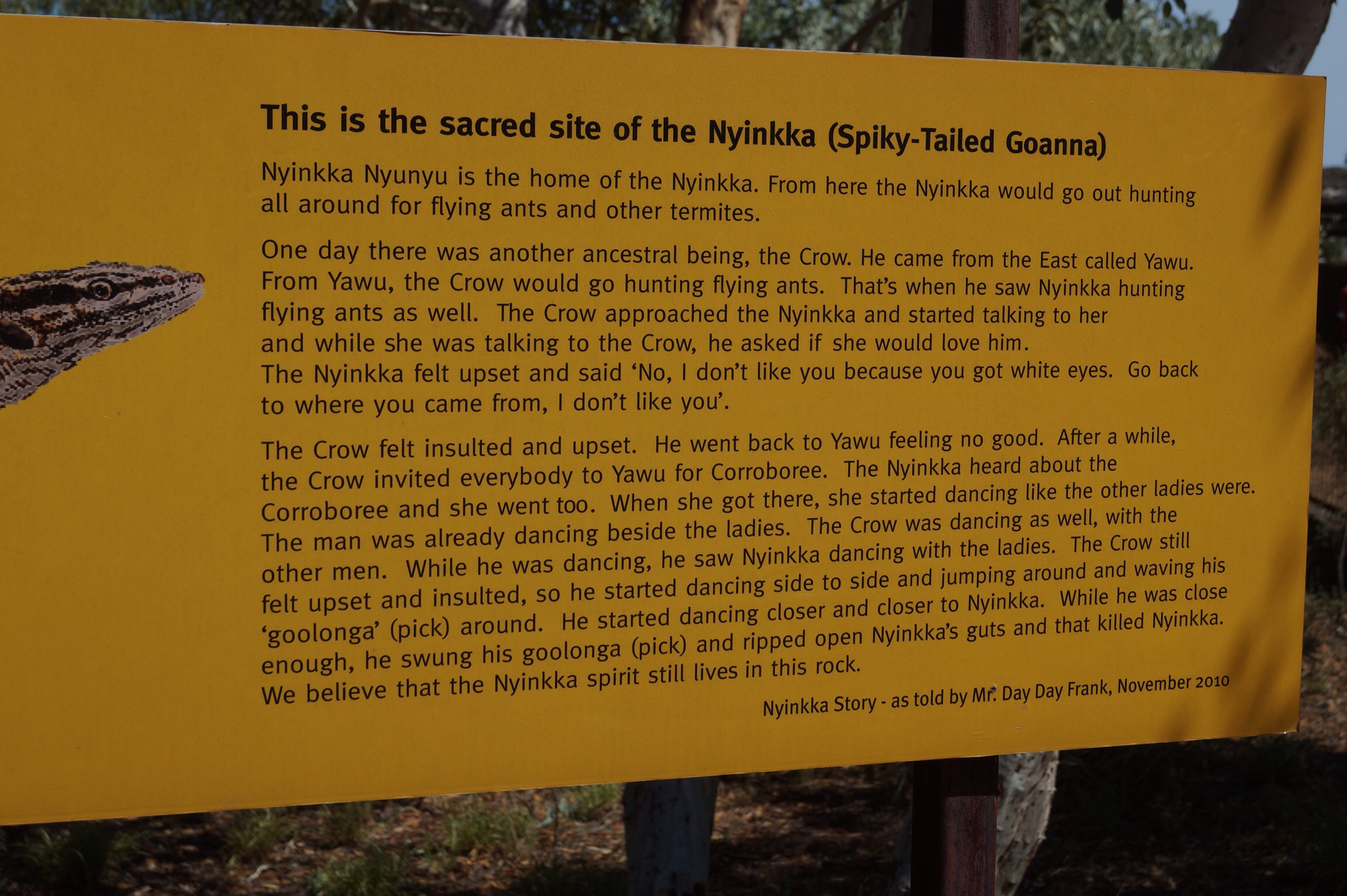 We headed out of Tennant Creek and continued North. It was a long drive to the next place so we would need to break it at a rest stop or out in the bush. As the rest stops were full of caravans with the same idea, we followed a track down into the bush and camped in a gravel pit. The isolation was much better and we could hardly hear the road trains passing in the night. We had a lovely fire to cook on but it was hot again and getting sticky. During the day we had crossed the imaginary line from the red centre of Australia into the Tropical Top End.
We headed out of Tennant Creek and continued North. It was a long drive to the next place so we would need to break it at a rest stop or out in the bush. As the rest stops were full of caravans with the same idea, we followed a track down into the bush and camped in a gravel pit. The isolation was much better and we could hardly hear the road trains passing in the night. We had a lovely fire to cook on but it was hot again and getting sticky. During the day we had crossed the imaginary line from the red centre of Australia into the Tropical Top End.
 Driving each day was relatively featureless, the road was straight, and the scenery just dry bush. It was not without its minor incidents though. As we were driving we noticed a big flock of red tailed black cockatoos. They are large beautiful birds but obviously not that bright as when they took off one flew into our windscreen. Well actually it missed the windscreen but hit and smashed the protective sun visor we have on the top of the windscreen. Amazingly the bird survived been hit by a 10 tonne truck at 80 kmph and flew off into a nearby tree. We stopped to pick up our smashed plastic and the bird was squawking away in a tree, although I suspect it was not feeling too well.
Our next stop was at the iconic Daly Waters pub. This is a Northern Territory institution and is one of the oldest pubs in the Territory. There was nothing for miles and miles around yet people flocked to the pub. The interior of the pub was lined with travellers memorabilia including bras, thongs and other items of clothing. We decided to stay the night and enjoy the traditional beef and barra barbecue. The food was good and the icy cold beer very welcome in the heat. I think Gilly and I were about 20 years younger than anyone else there (except children ), well Gilly was anyway. There was also live entertainment although the singer was only just alive. He belted out a series of tracks, none of which had been written since I was born. Nevertheless it was an enjoyable evening and certainly a different one out in the Outback.
Driving each day was relatively featureless, the road was straight, and the scenery just dry bush. It was not without its minor incidents though. As we were driving we noticed a big flock of red tailed black cockatoos. They are large beautiful birds but obviously not that bright as when they took off one flew into our windscreen. Well actually it missed the windscreen but hit and smashed the protective sun visor we have on the top of the windscreen. Amazingly the bird survived been hit by a 10 tonne truck at 80 kmph and flew off into a nearby tree. We stopped to pick up our smashed plastic and the bird was squawking away in a tree, although I suspect it was not feeling too well.
Our next stop was at the iconic Daly Waters pub. This is a Northern Territory institution and is one of the oldest pubs in the Territory. There was nothing for miles and miles around yet people flocked to the pub. The interior of the pub was lined with travellers memorabilia including bras, thongs and other items of clothing. We decided to stay the night and enjoy the traditional beef and barra barbecue. The food was good and the icy cold beer very welcome in the heat. I think Gilly and I were about 20 years younger than anyone else there (except children ), well Gilly was anyway. There was also live entertainment although the singer was only just alive. He belted out a series of tracks, none of which had been written since I was born. Nevertheless it was an enjoyable evening and certainly a different one out in the Outback.
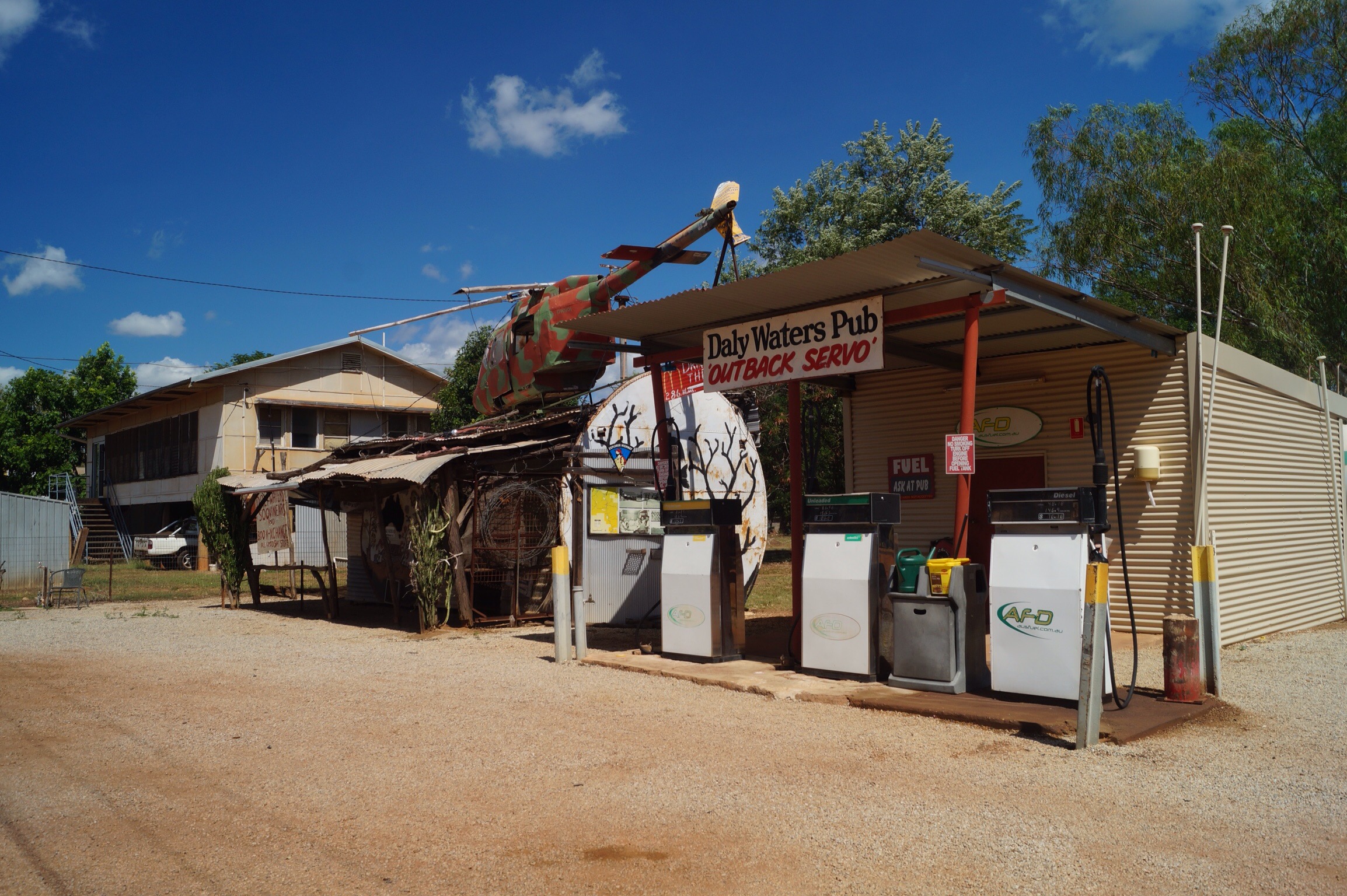
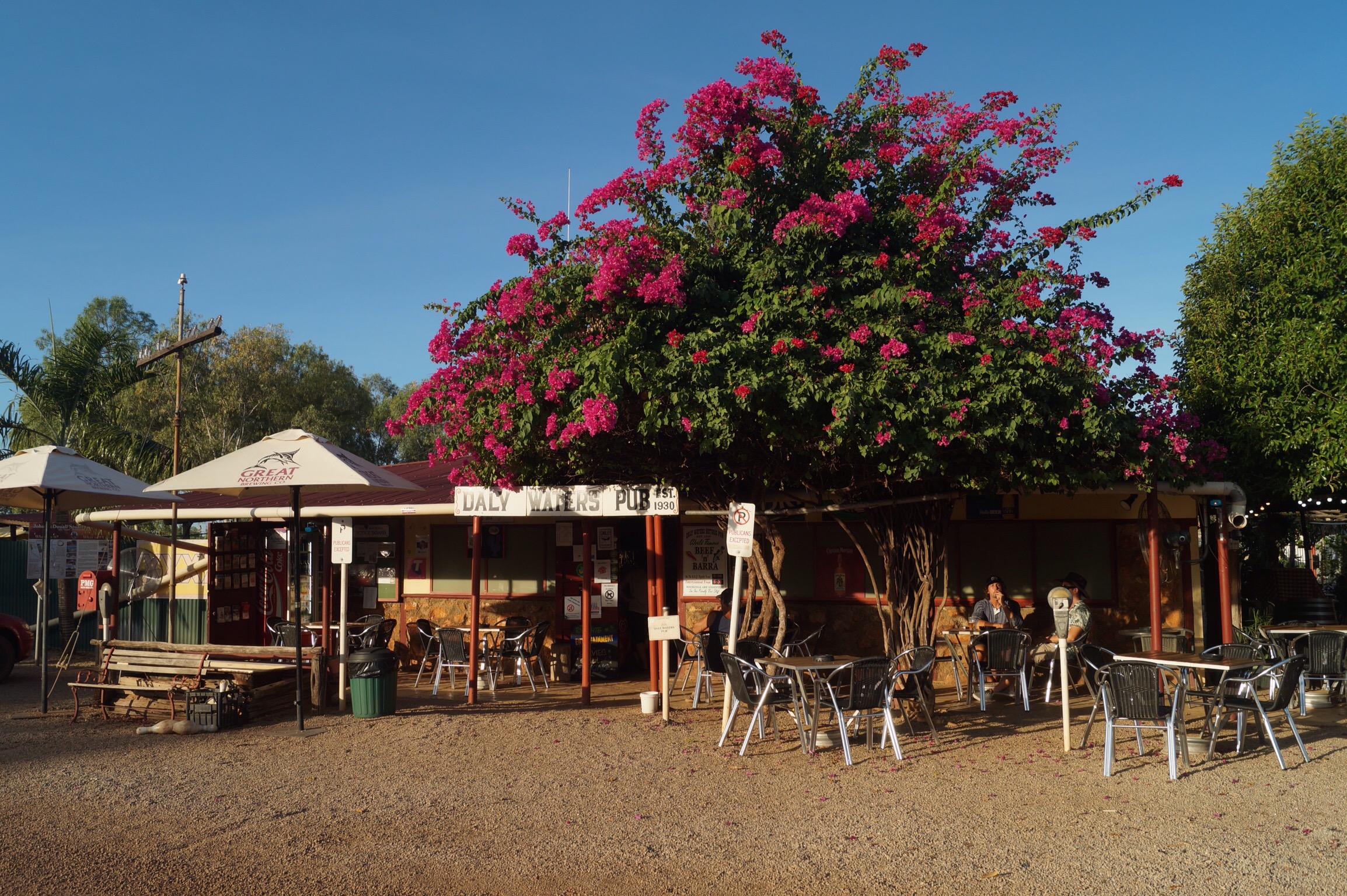

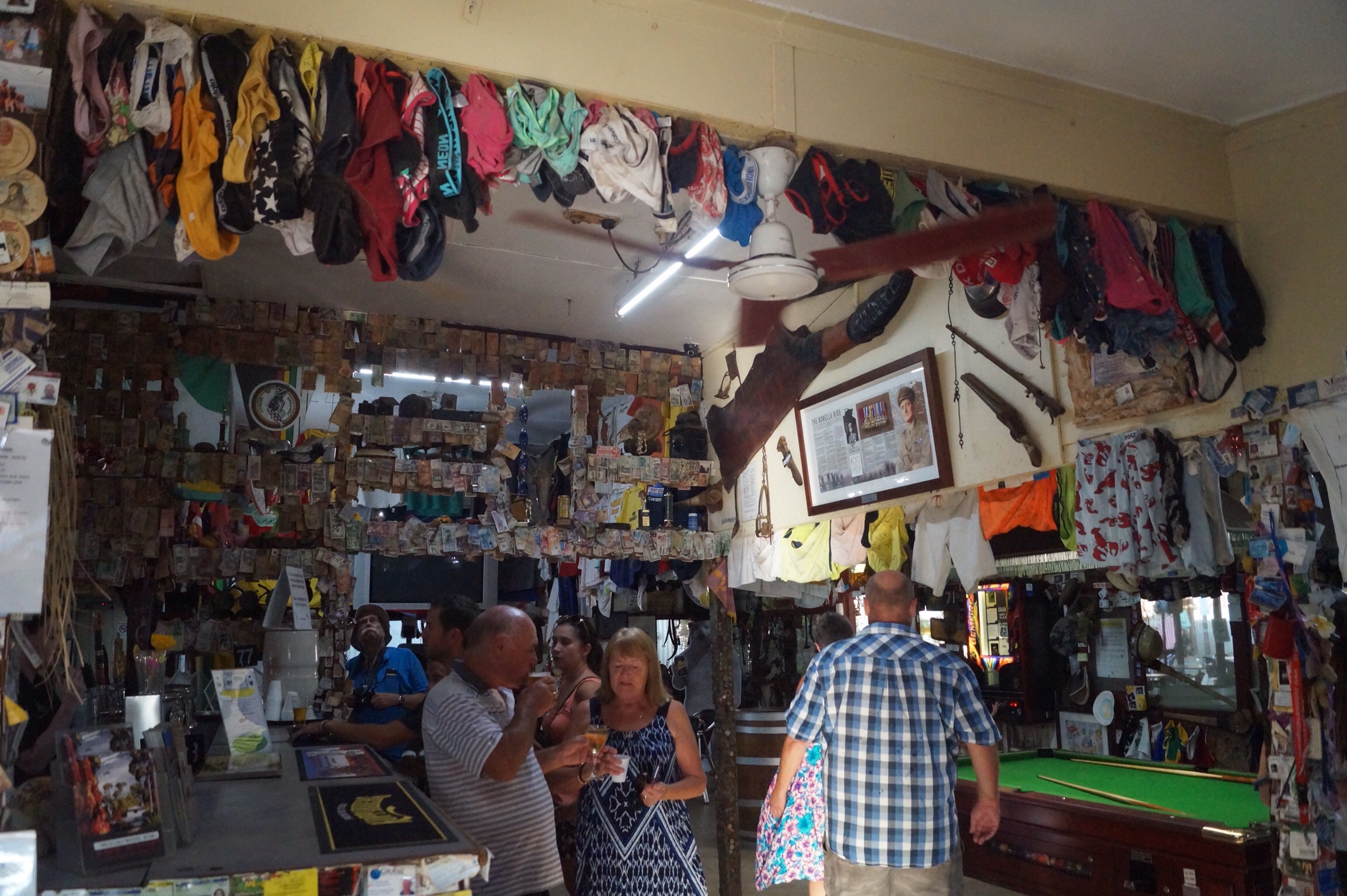 The town of Matarnaka is famous for been at the setting for the book "We of the Never Never". However we were there to visit something different. Bitter Springs is an oasis in the Outback and we spent a pleasant afternoon floating gently down the springs looking for turtles in the crystal clear waters. It seemed strange seeing palm trees and ponds that had formed in the wet season, particularly after the dry centre. It was a sign that things were going to change as we entered the much wetter Top End.
The town of Matarnaka is famous for been at the setting for the book "We of the Never Never". However we were there to visit something different. Bitter Springs is an oasis in the Outback and we spent a pleasant afternoon floating gently down the springs looking for turtles in the crystal clear waters. It seemed strange seeing palm trees and ponds that had formed in the wet season, particularly after the dry centre. It was a sign that things were going to change as we entered the much wetter Top End.

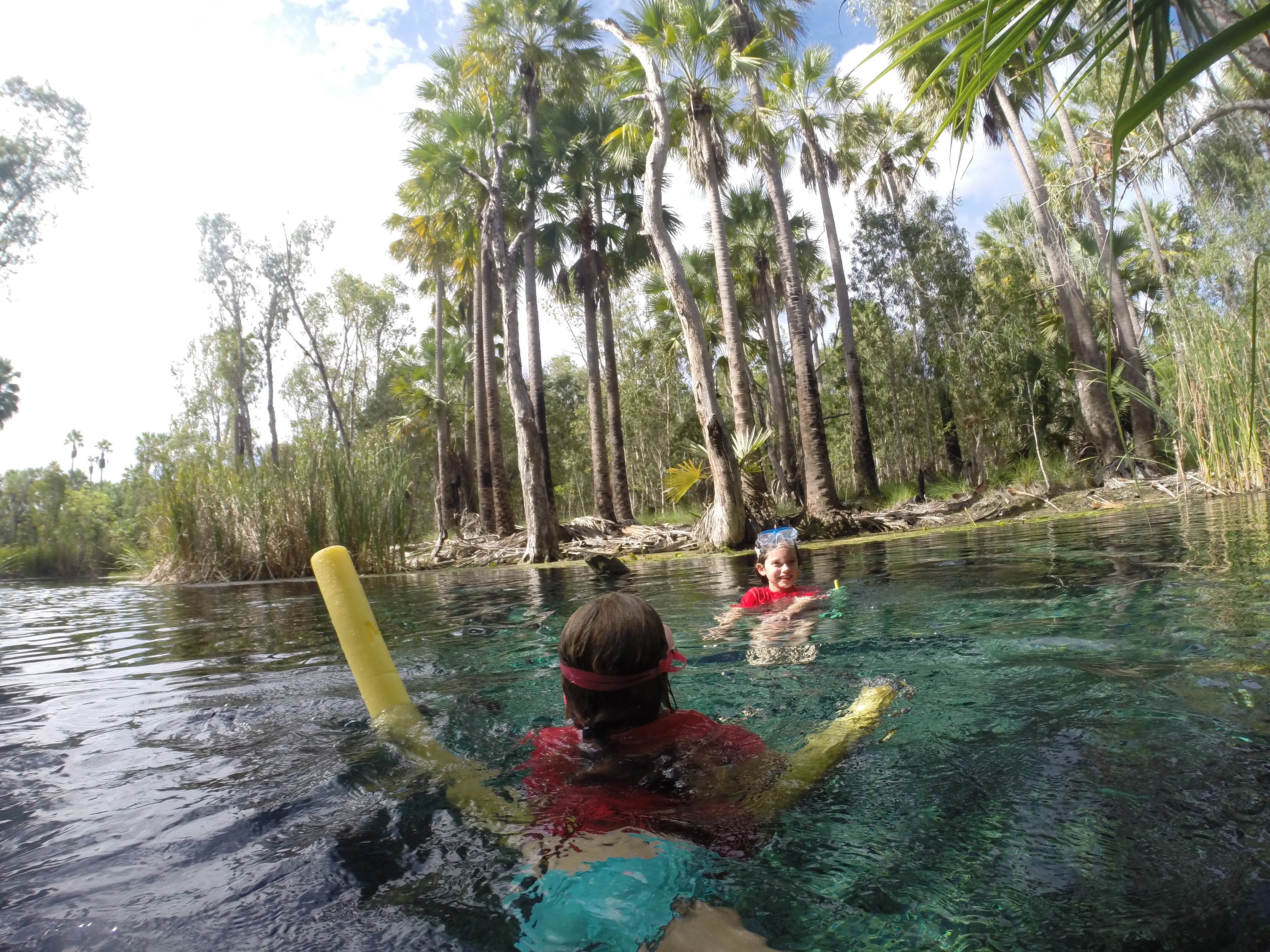
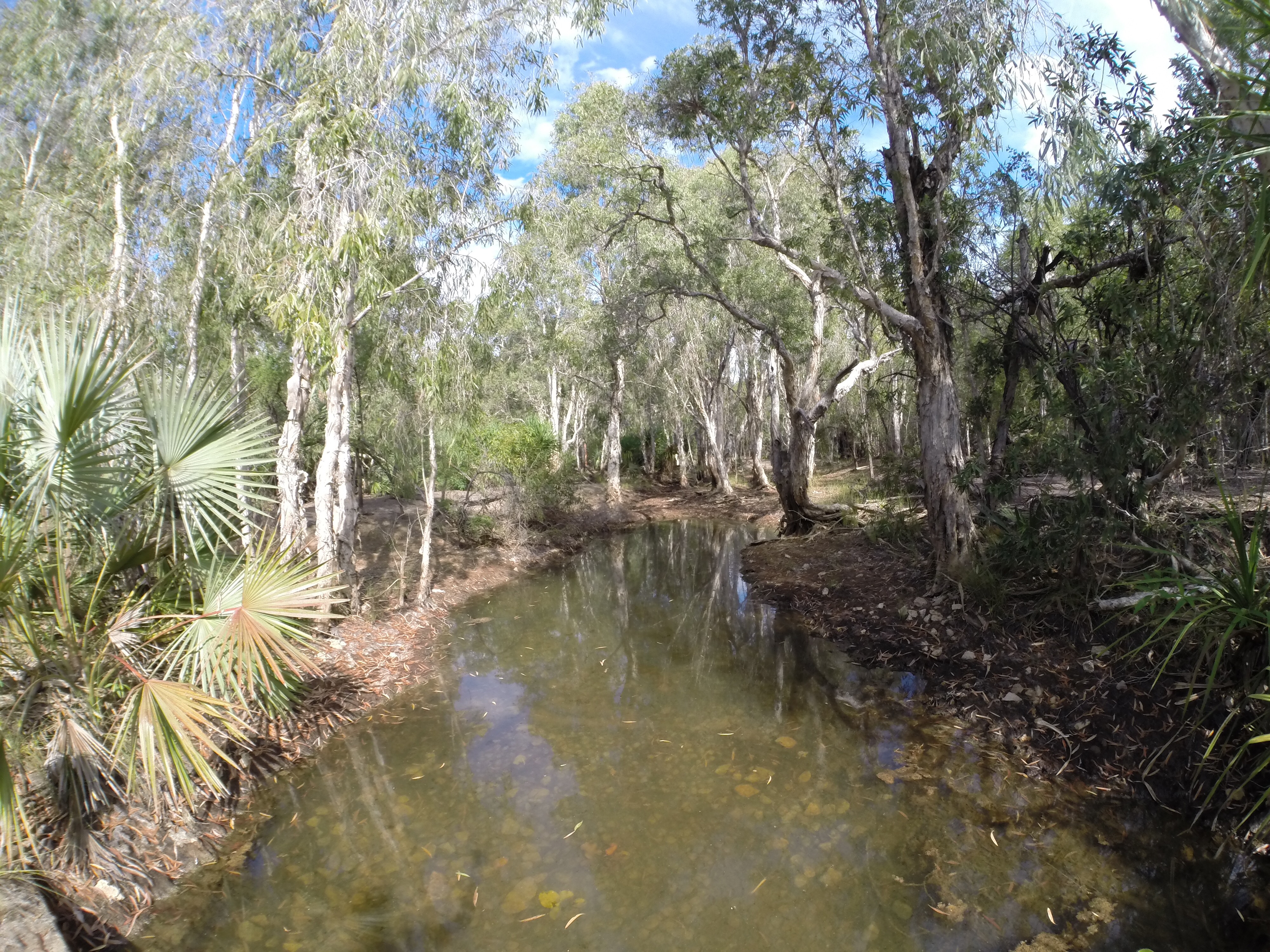 The other important point was finding a place where I had an internet signal so I could follow an important football match back in England. And it was worth it. Middlesbrough are back in the Premier League!
And I wasn't the only one interested in the result.
The other important point was finding a place where I had an internet signal so I could follow an important football match back in England. And it was worth it. Middlesbrough are back in the Premier League!
And I wasn't the only one interested in the result.
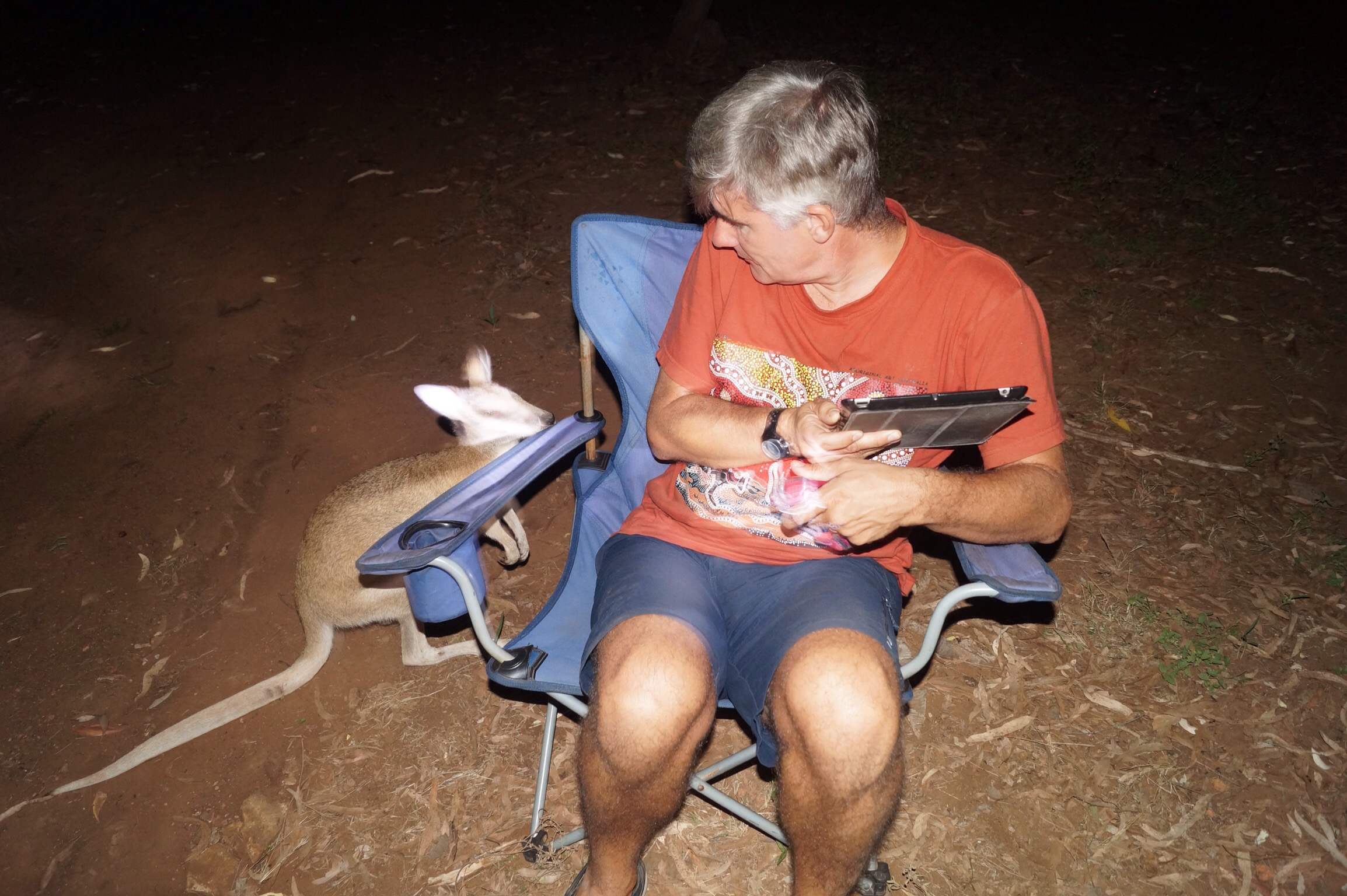 From the town of Katherine, where we stopped to resupply, we had a choice. We could go east to Kakadu National Park or continue North up the track to Darwin. Our plan had been to go to Kakadu but we found out that as it was still early on the dry season not all the sights were open. The friendly lady in the information office told us that most would be open on a week so we decided to head North and go through Kakadu on the way back down.
Before Darwin we headed into Litchfield National Park. Here some things were also still closed for maintenance. We eventually found a nice campsite near a large waterfall and if to remind us that the wet season was not that far behind us we had two big storms. It wouldn't have been so bad except the rain did not reduce the temperature and just made the humidity worse. Evenings were particularly unpleasant as it was hot and humid and you could not sit outside because of the mosquitos.
The days were much better though as we swam in some beautiful rock holes and beneath a waterfall. It was lovely to sit in the cool water. The park is also famous for its Magnetic Termites that build their termite mounds in an exact North South direction so as to minimise the impact from the suns rays.
From the town of Katherine, where we stopped to resupply, we had a choice. We could go east to Kakadu National Park or continue North up the track to Darwin. Our plan had been to go to Kakadu but we found out that as it was still early on the dry season not all the sights were open. The friendly lady in the information office told us that most would be open on a week so we decided to head North and go through Kakadu on the way back down.
Before Darwin we headed into Litchfield National Park. Here some things were also still closed for maintenance. We eventually found a nice campsite near a large waterfall and if to remind us that the wet season was not that far behind us we had two big storms. It wouldn't have been so bad except the rain did not reduce the temperature and just made the humidity worse. Evenings were particularly unpleasant as it was hot and humid and you could not sit outside because of the mosquitos.
The days were much better though as we swam in some beautiful rock holes and beneath a waterfall. It was lovely to sit in the cool water. The park is also famous for its Magnetic Termites that build their termite mounds in an exact North South direction so as to minimise the impact from the suns rays.
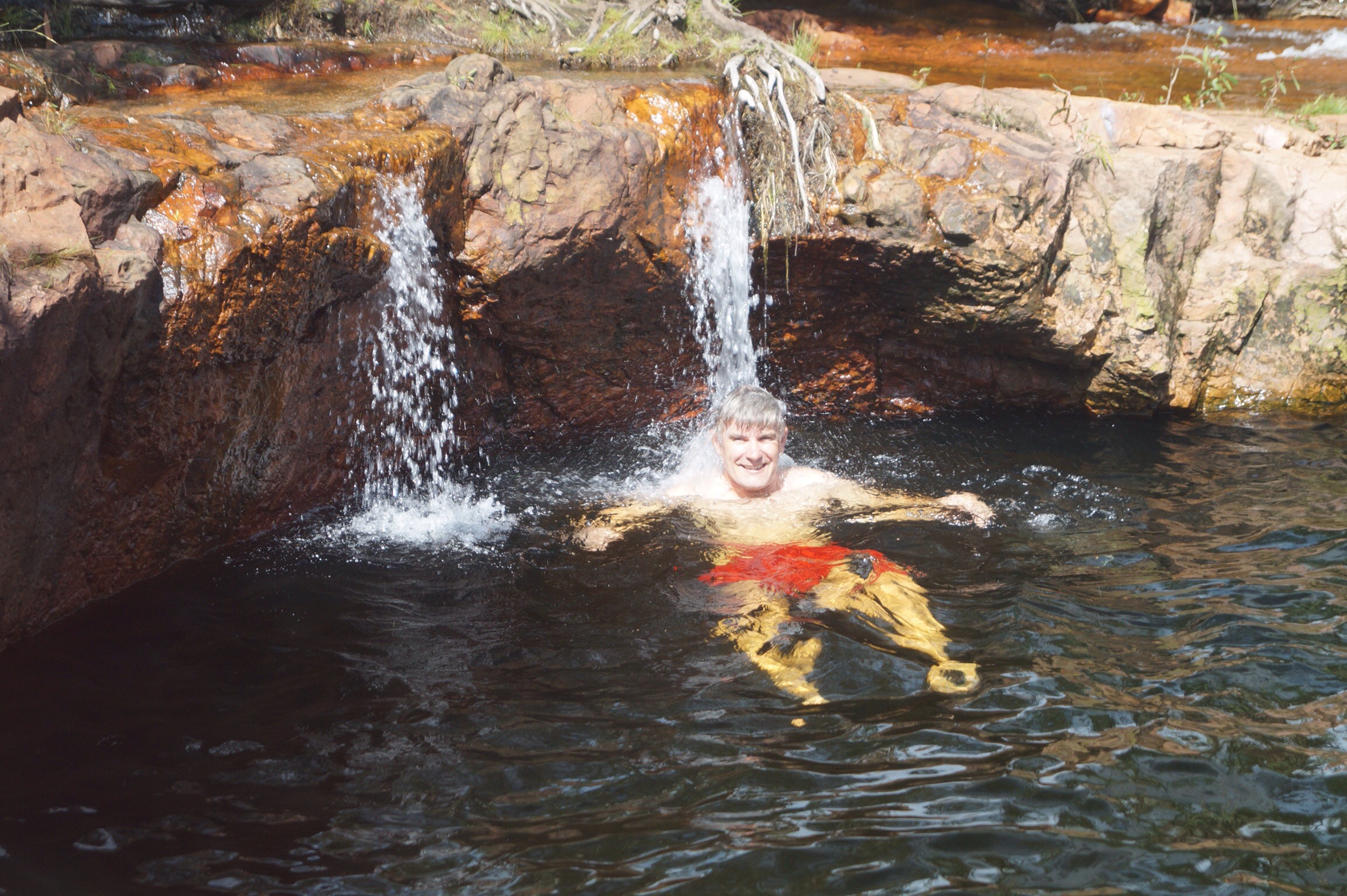
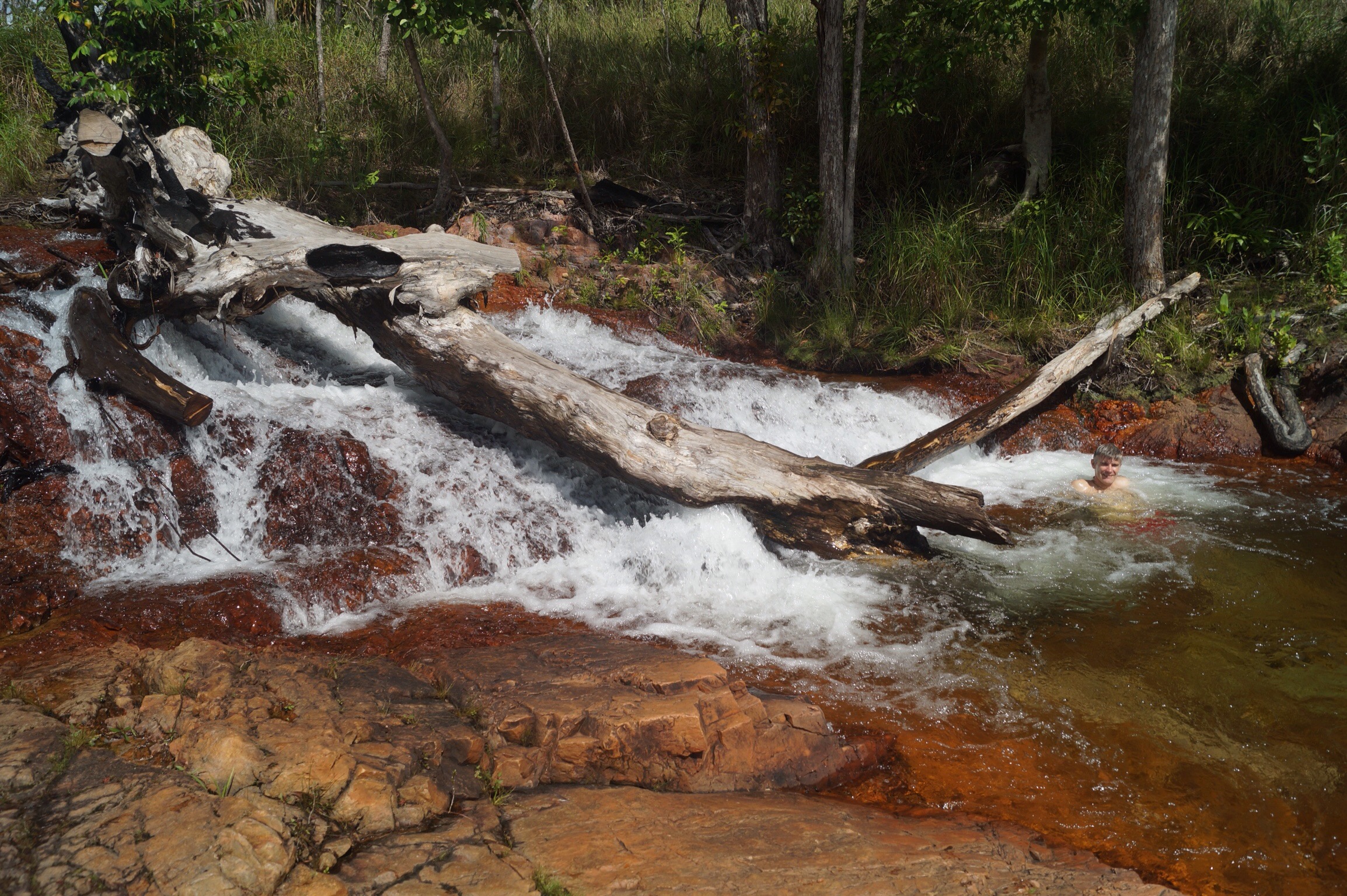

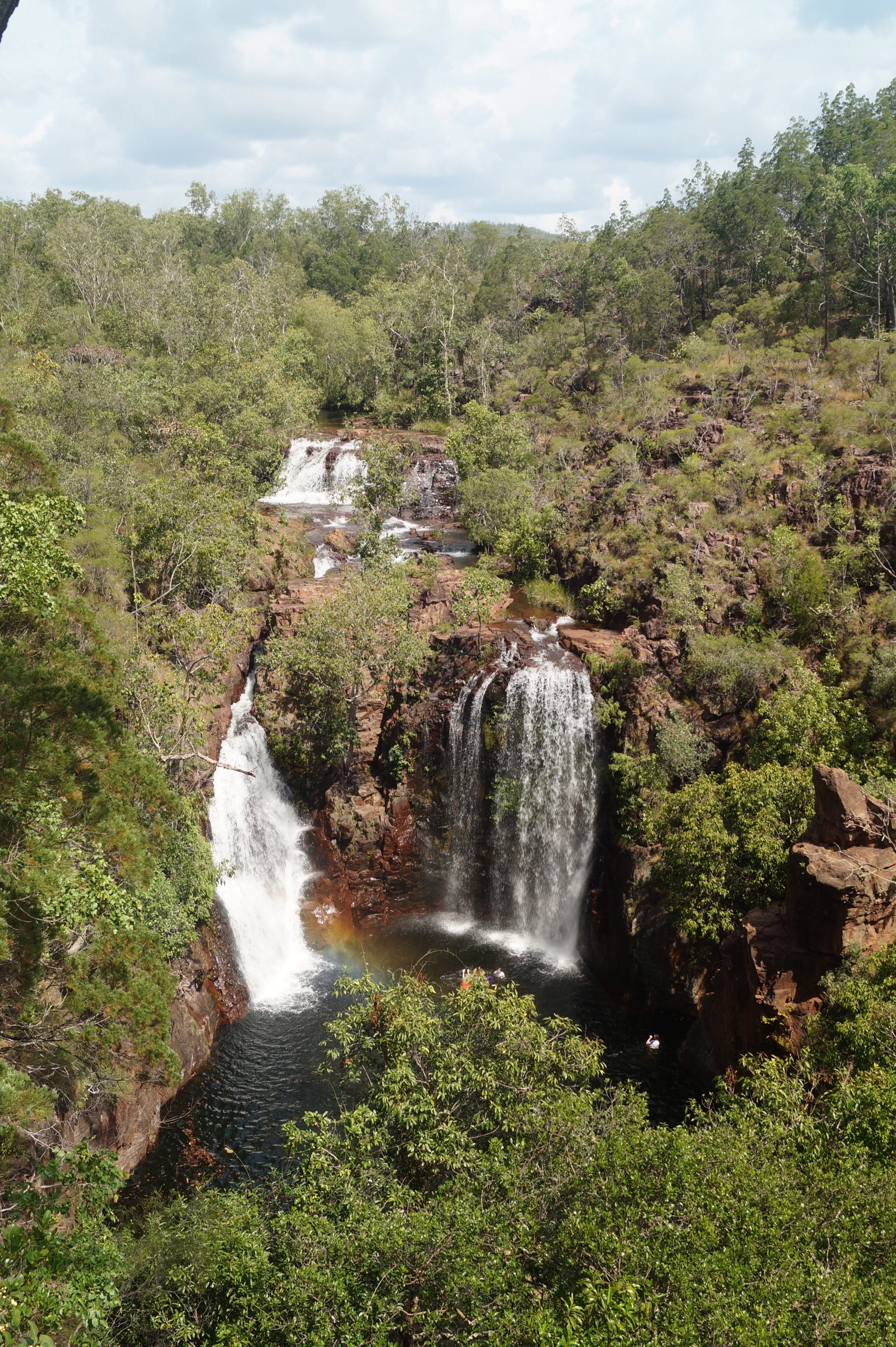
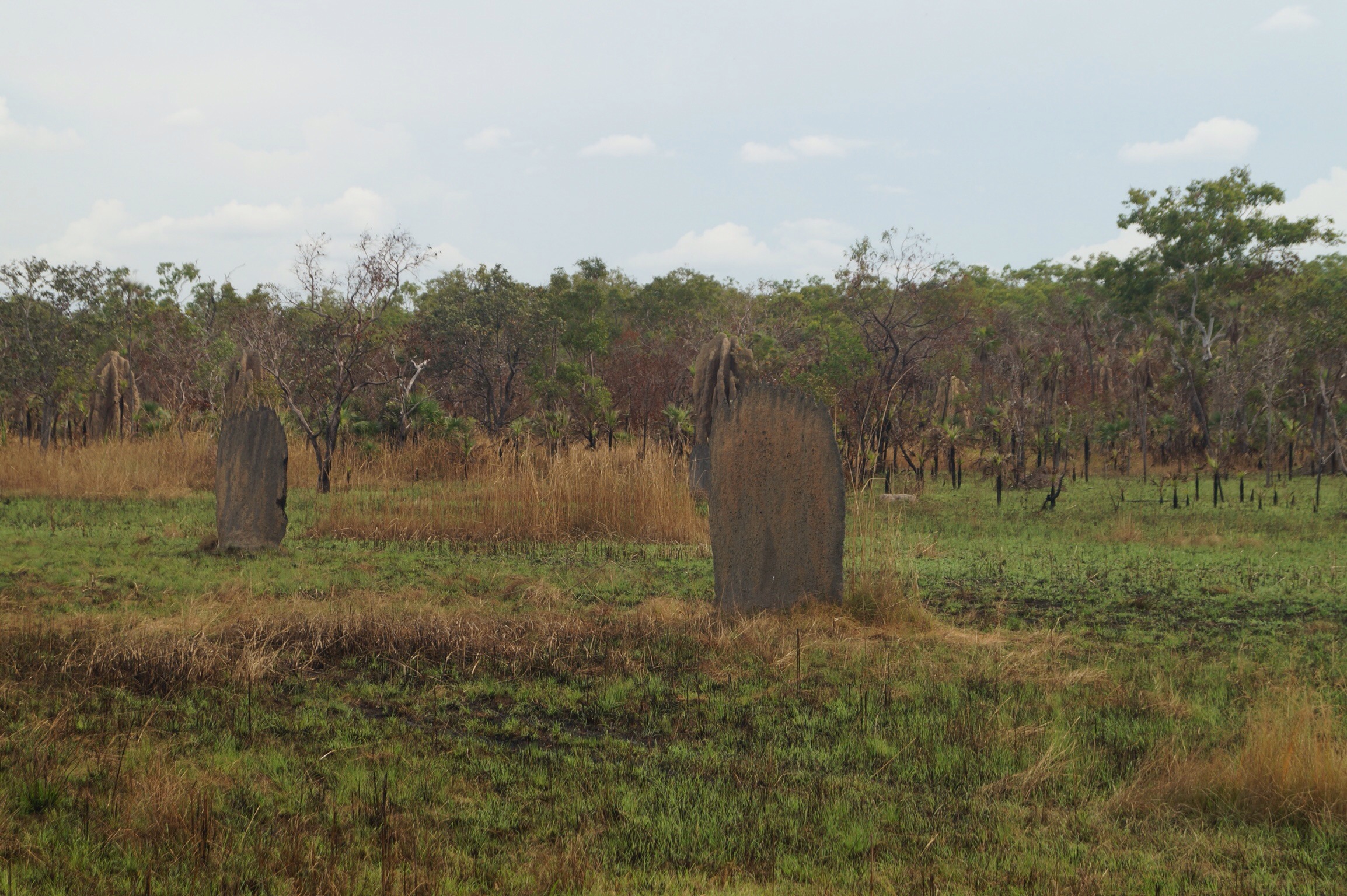
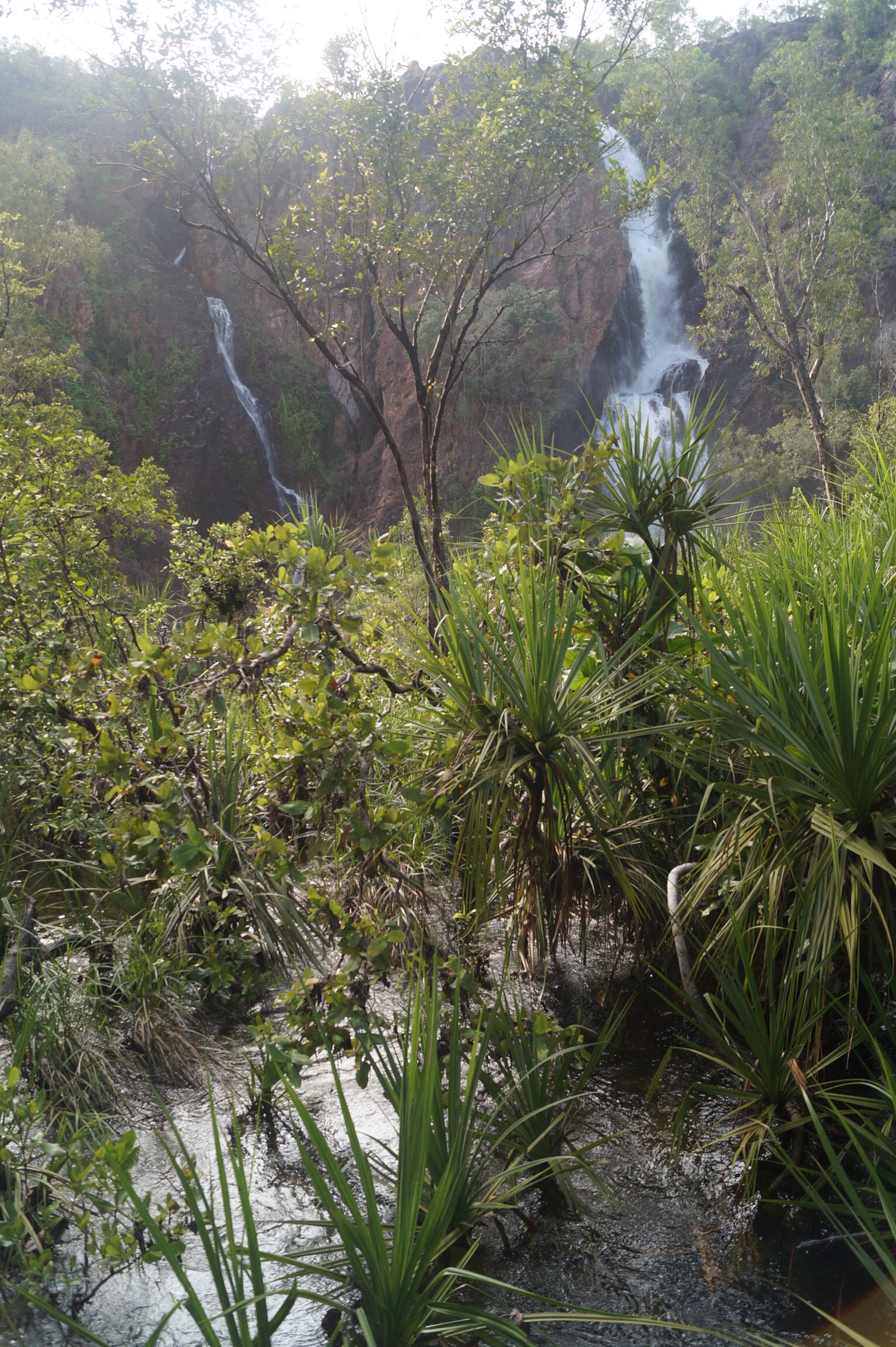 After travelling just over 1,600kms up The Track from Alice Springs we reached the tropical capital of the Northern Territory, Darwin.
After travelling just over 1,600kms up The Track from Alice Springs we reached the tropical capital of the Northern Territory, Darwin. 









